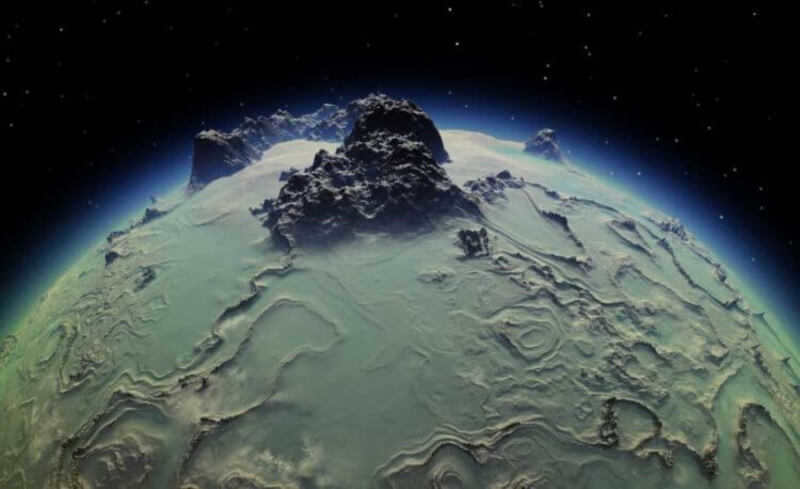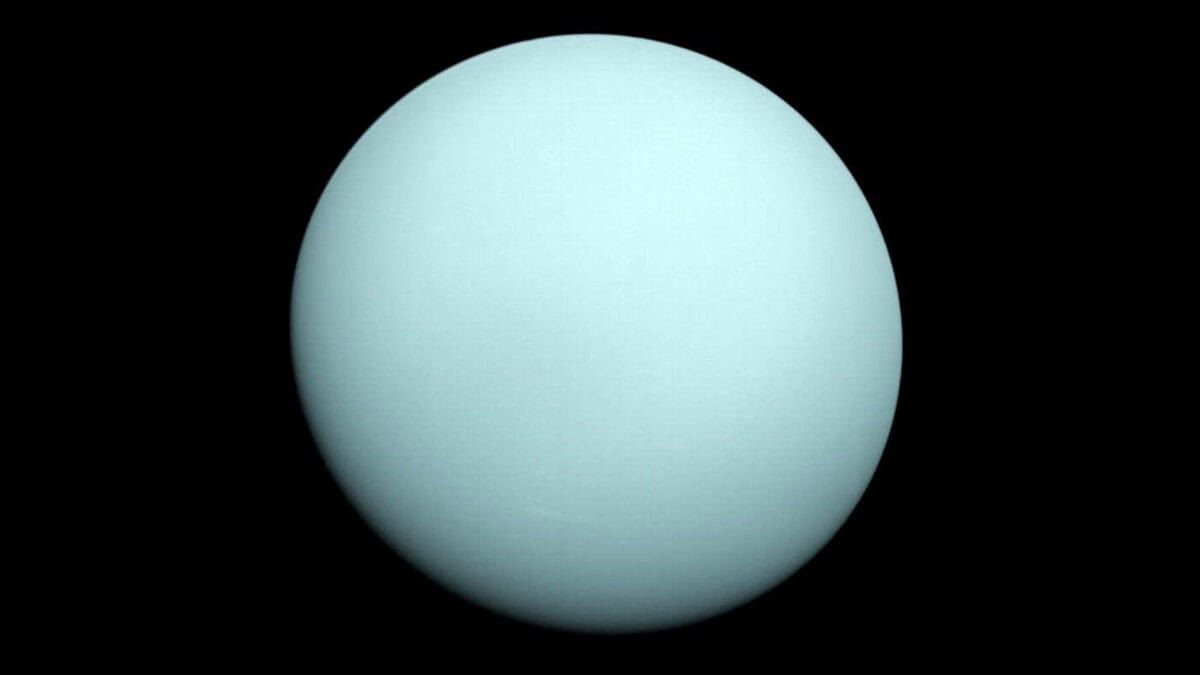Uranus, with its greenish hue, is often regarded as the least interesting planet in our solar system. However, there are numerous intriguing facts about this celestial body.
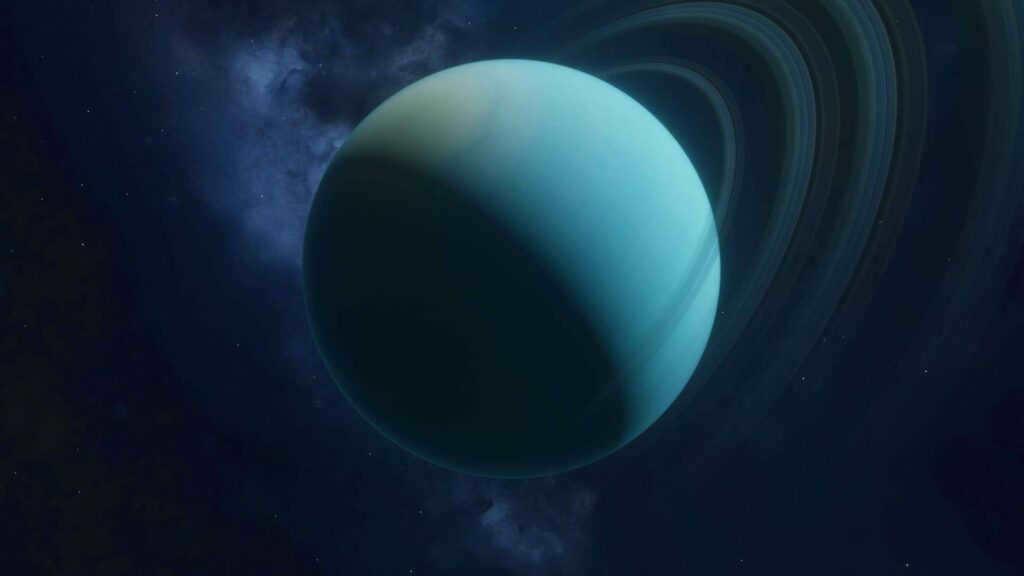
1. Uranus is the initial planet uncovered in contemporary times
Uranus is the seventh planet from the Sun. However, it is the first planet whose discoverer’s identity we are aware of. The ancient Greeks were familiar with Mercury, Venus, Mars, Jupiter, and Saturn. But it wasn’t until the 18th century that people became aware of the existence of other planets.
The individual who discovered Uranus is the English astronomer William Herschel. He was primarily known for his expertise in finding comets, so when he observed a hazy point moving among the stars in 1781, he initially believed he had found a “comet visitor”. Interestingly, astronomers had spotted Uranus at least 21 times before, but they had mistaken it for a very dim star.

2. Uranus was given its name in honor of the progenitor of the deities and titans
Uranus was bestowed its name in tribute to the ancient Greek god of the sky and the son of Chaos. Remarkably, it is the sole planet that bears the name of its Greek equivalent rather than its Roman counterpart. According to mythology, the remaining prominent celestial bodies, such as Pluto and Ceres, are descendants of Uranus, either as his children, grandchildren, or great-grandchildren. Gaia-Earth, on the other hand, is believed to be his sister.
In addition to the inhabitants of Mount Olympus, the mythological Uranus is also recognized as the progenitor of nymphs, titans who battled against the gods, the Cyclopes with a solitary eye, and the hecatoncheires with a hundred arms.
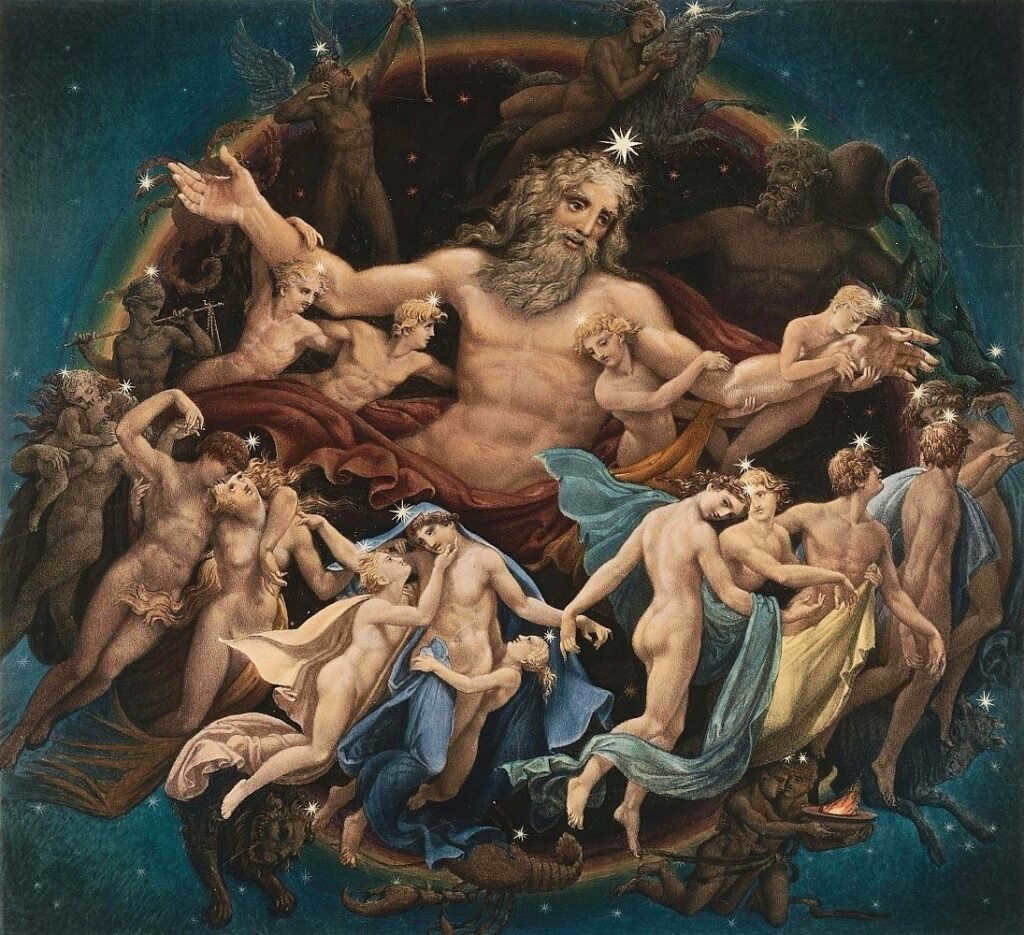
3. The planet was originally intended to be named after a monarch of England
Instead of being named after a Greek deity, the planet could have been named after a monarch of England. Sir William Herschel, the discoverer of Uranus, proposed the name Georgium Sidus, which means “George’s Star” in Latin, in honor of George III, the reigning king of England at the time.
There was ongoing debate about the name of the planet for several decades. Some advocated for naming it after Herschel himself. The name “George’s Dawn” was the most popular choice in Great Britain for a long time. However, in 1850, the planet was officially named Uranus.

4. Uranus is set to experience its summer solstice in 2028
Uranus is situated at an average distance of 2.8 billion kilometers from the Sun, resulting in a complete orbit around the Sun taking 84 Earth years. The planet undergoes a seasonal cycle, with the northern hemisphere recently passing the vernal equinox in 2007.
However, the summer solstice on Uranus is not expected until 2028, with the last occurrence happening back in 1944. As a result, individuals who have experienced a full local year on Uranus can proudly boast about their longevity.
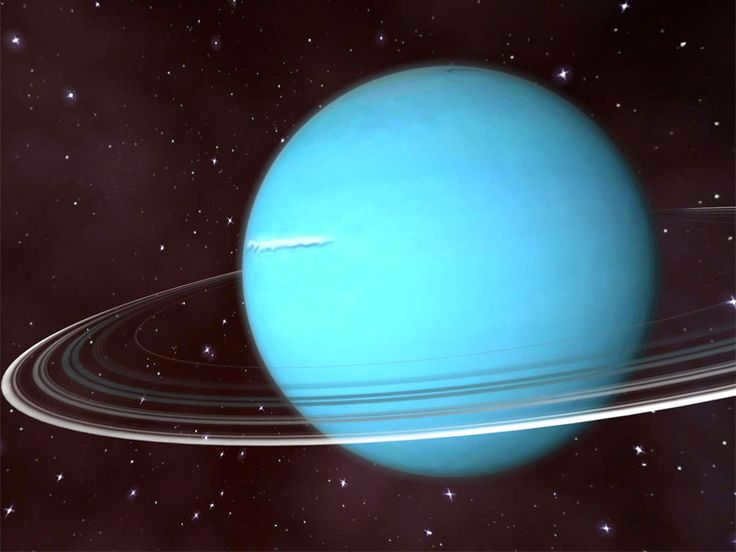

5. Testing the acuity of your vision on Uranus
Despite its distance from the Sun and centuries of hiding from astronomers, Uranus can still be observed with the naked eye. The planet’s apparent magnitude ranges from 5.7ᵐ to 6.0ᵐ.
This implies that to observe Uranus without binoculars, one would require optimal conditions and impeccable eyesight. Even then, it would only appear as a faint star. Further details can only be discerned with astronomical instruments.
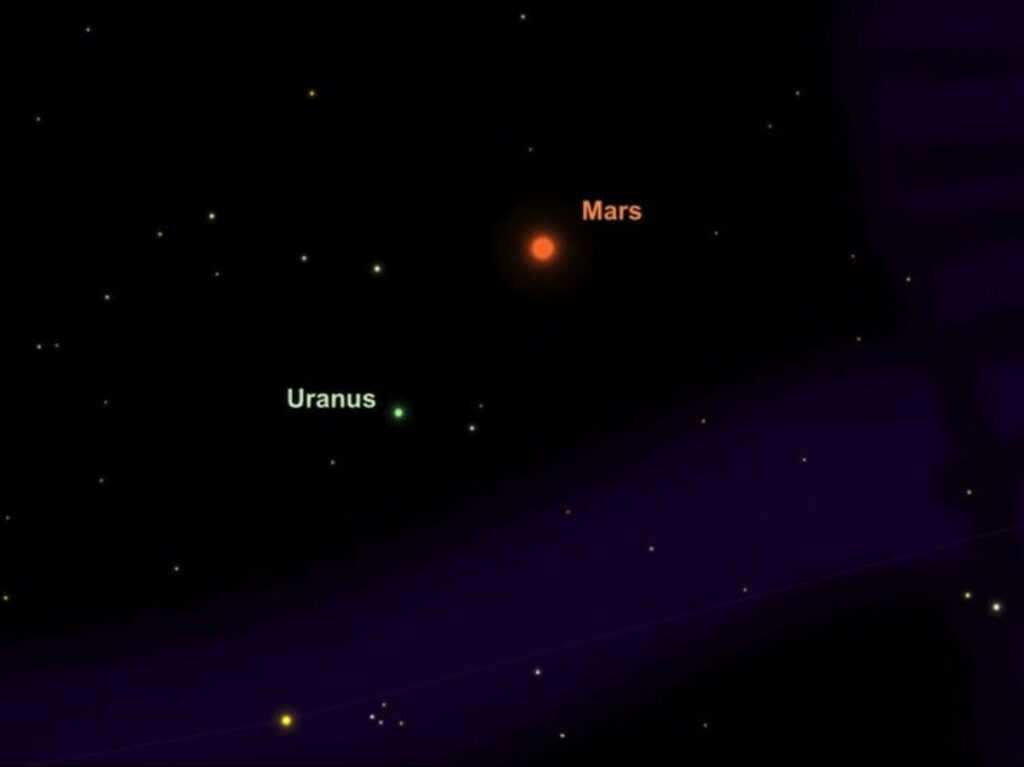

6. Uranus is a unique planet
Uranus has a unique characteristic – its equator is inclined at an angle of 97° to the plane of its orbit. This means that the planet appears to be rolling in its orbit, but with a reverse direction of rotation compared to a typical spinning wheel.
This unique tilt of Uranus’s axis results in unusual day and night patterns. For nearly 42 years, one pole of the planet experiences constant brightness, while the other pole remains in perpetual darkness. Only at the equator does Uranus have a day similar to ours, although much shorter in duration. Additionally, the Sun appears to move in a circular path above the horizon, occasionally being hidden by it.
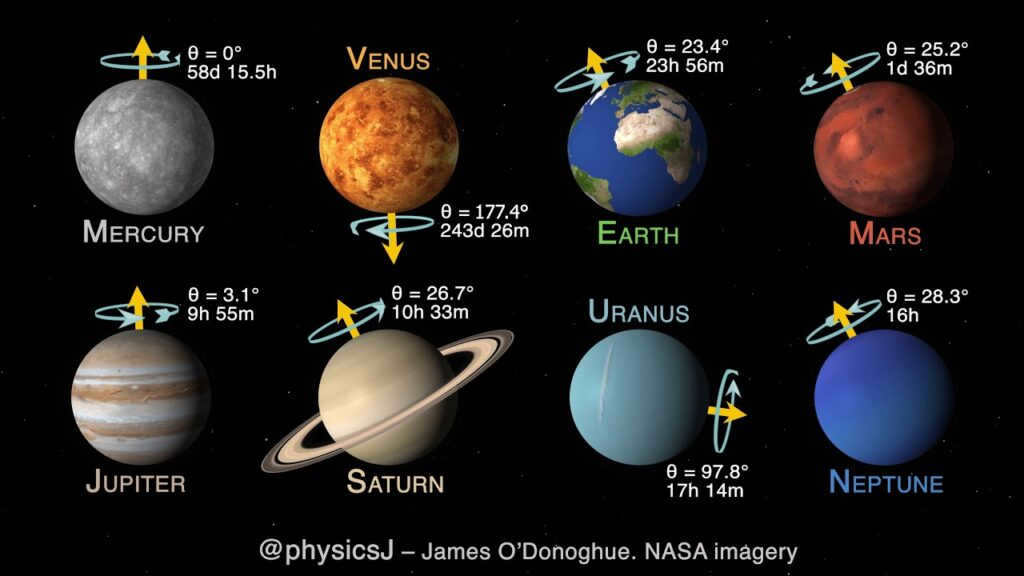
7. Uranus’s magnetic field is not aligned with the planet’s center
Similar to Earth, Uranus has magnetic poles that are offset from the true poles. The south magnetic pole is located in the planet’s northern hemisphere, while the north pole is in the southern hemisphere. However, unlike Earth, Uranus’s magnetic axis does not pass through its center.
This unique situation is likely due to the fact that Uranus’s magnetic field is generated not by its core, but by regions in its outer layers where significant matter flows occur. As a result, the center of Uranus’s magnetic dipole is positioned 1/3 of the way from the planet’s center.
8. The frigid planet in our solar system is Uranus
Uranus holds the title for being the coldest planet in our solar system. It is even colder than its neighbor, Neptune, which is located farther from the Sun. The seventh planet in our solar system is home to the coldest place on its surface, which can be found in its lower atmosphere.
In this region, temperatures have plummeted to a bone-chilling -224 degrees Celsius. The extreme cold can be attributed to the long periods of “polar nights” experienced by certain areas on Uranus’ surface. During these extended periods, some regions have not been exposed to sunlight for over 40 years.

9. The presence of a dark spot on Uranus
The atmosphere of Uranus is known for its tranquility compared to other gas giants. During the initial approach of the Voyager 2 spacecraft, scientists observed only a few small clouds. However, there are still irregularities in the atmosphere.
One piece of evidence for this is the discovery of the Great Dark Spot on Uranus in 2006, which bears resemblance to a similar phenomenon observed on Neptune. This colossal hurricane exhibits incredibly powerful winds, capable of reaching speeds up to 200 m/s.
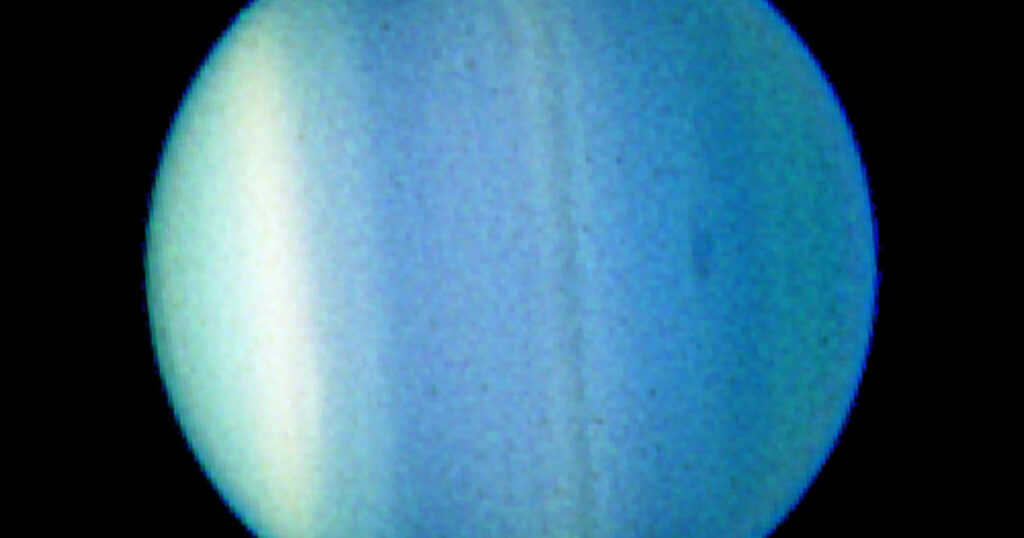
10. Uranus emits an odor similar to that of putrefied eggs
In 2018, scientists utilized the NIFS spectrograph to analyze the composition of the upper atmosphere of Uranus. The findings revealed that the clouds in this particular layer are comprised of solidified hydrogen sulfide. Interestingly, this is the same compound responsible for the distinctive scent of rotting eggs.
The presence of this substance in the upper atmosphere of Uranus suggests that the planet did not originate in its current orbit. Similar to other gas giants, Uranus was likely formed closer to the Sun and subsequently migrated to its present location within the initial tens of millions of years of its existence.
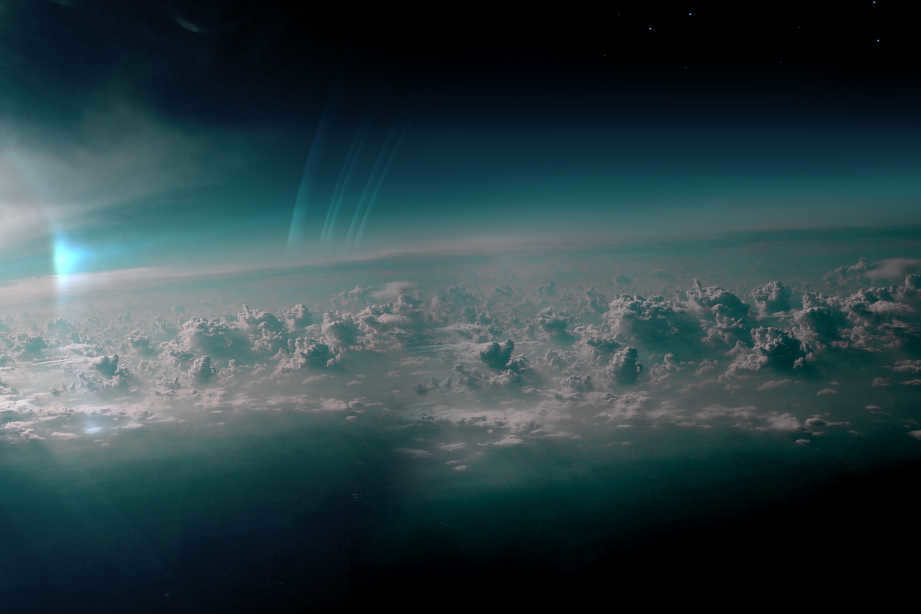
11. Uranus boasts a total of 13 rings
In the year of 1977, the presence of rings encircling Uranus was brought to light. It marked the first time human beings had laid eyes on such a phenomenon since the discovery of Saturn’s prominent adornment. This noteworthy revelation was made by carefully observing the planet as it eclipsed a distant star.
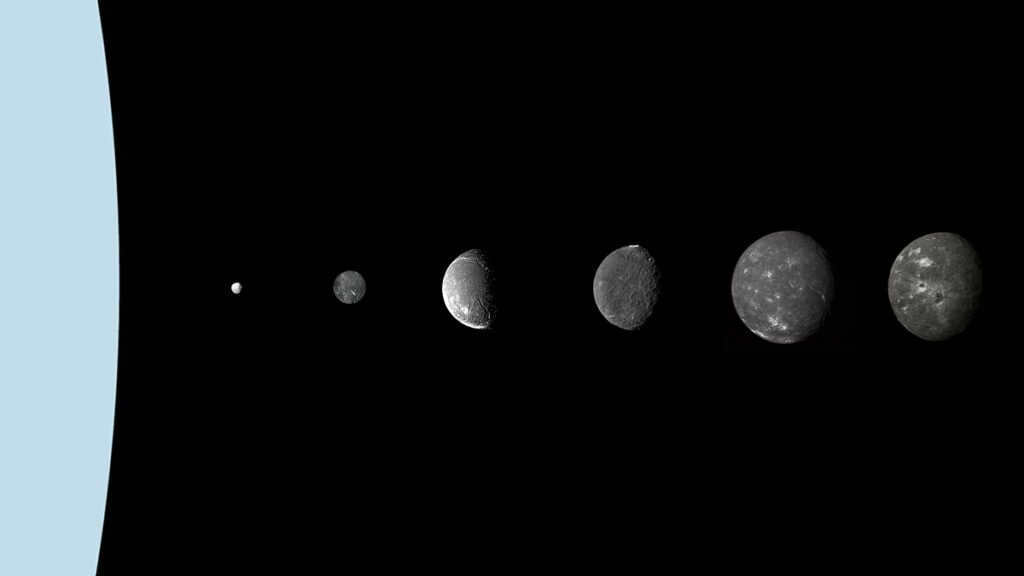
Uranus possesses a total of 13 rings, with two of them being discovered as recently as 2005. Interestingly, there is historical evidence from William Herschel regarding the observation of such structures, but contemporary researchers cast doubt on whether he could actually perceive them.
The remaining rings are bestowed with names inspired by characters from various literary works by William Shakespeare. Notably, the play “The Tempest” has the most influence, as nine of Uranus’ satellites are named after its characters. Additionally, the work includes a character named Ariel, so it can be said that this particular work is referenced ten times within the names of Uranus’ satellites.
Stay up-to-date with the most intriguing news and facts on our Telegram channel!
Join: https://t.me/ustmagazine

I have been working as a news editor and feature writer for the past 10 years, focusing on popularizing science in Ukrainian. I hold a PhD in engineering and have previously taught civil engineers. However, my recent work has involved communicating scientific concepts to the general public across various disciplines. One area that has always captivated me is space. In my writing, I strive to show respect for the scientists behind important discoveries and the engineers responsible for space technology.
Uranus, along with Neptune, forms one of the two ice giants in our solar system, characterized by extremely low atmospheric temperatures. This article provides an in-depth exploration of Uranus’ temperature.
Our understanding of this planet is primarily based on observations made through telescopes and the valuable data collected during the successful Voyager 2 space mission, which captured images of this fascinating ice giant.
Uranus: The Chilling Planet of the Solar System
When it comes to the coldness factor, Uranus takes the crown as the coldest planet in our solar system. Its distant location as the seventh planet from the Sun might explain this phenomenon. However, it’s not just the distance that contributes to its icy nature. Uranus has a peculiar tilt, with its axis leaning at a staggering 97.77 degrees. This means that instead of its equator, the planet’s poles directly face the Sun. Surprisingly, Uranus manages to outdo even Neptune in terms of temperature, with its upper atmosphere reaching bone-chilling lows of -224 degrees Celsius during the night.
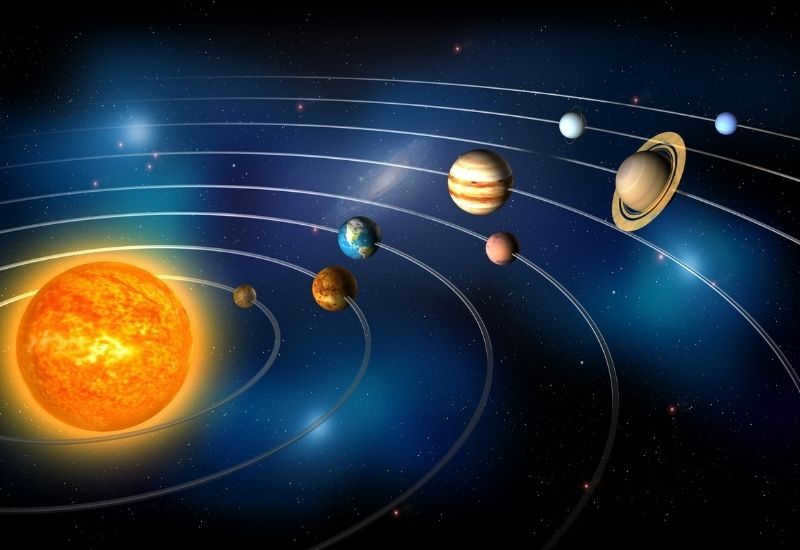
Thus far, scientists have proposed only two hypotheses to account for this occurrence. Some theorize that the core of the planet is excessively frigid and fails to heat the surface and subsequently the atmosphere. Alternatively, others posit the presence of a protective heat barrier that induces temperature irregularities.
Atmospheric Composition and Chemical Makeup of Uranus
Uranus lacks a solid crust, leading scientists to define its atmosphere as the layer of gases extending 300 km from a pressure point of 1 bar. This atmosphere is comprised of hydrogen, helium, and methane, and is further divided into the troposphere, stratosphere, and exosphere. Unlike Earth, Uranus does not possess a mesosphere.
Through spectroscopic analysis and the study of temperature anomalies, researchers have determined the chemical composition of Uranus to include:
The elemental makeup of Uranus
Accurate information regarding the chemical makeup and temperature of Uranus’s core is currently lacking. Certain scientists argue that the planet may not possess a heated core, as it emits only a slightly higher amount of heat than it absorbs from the Sun. However, NASA specialists contend that the core temperature measures 4982° C.
Night and day temperatures on the surface of Uranus
Because of the unique tilt of its axis, Uranus experiences an unconventional pattern of day and night. The planet’s poles face the Sun, resulting in a day cycle that is only observed at the equator. However, the Sun does not rise very high above the horizon. The exact temperature on the surface of Uranus is difficult to determine due to its poorly understood structure. It is estimated to average around +47° C in the troposphere and gradually increase to +5000° C in the deep ammonia seas.
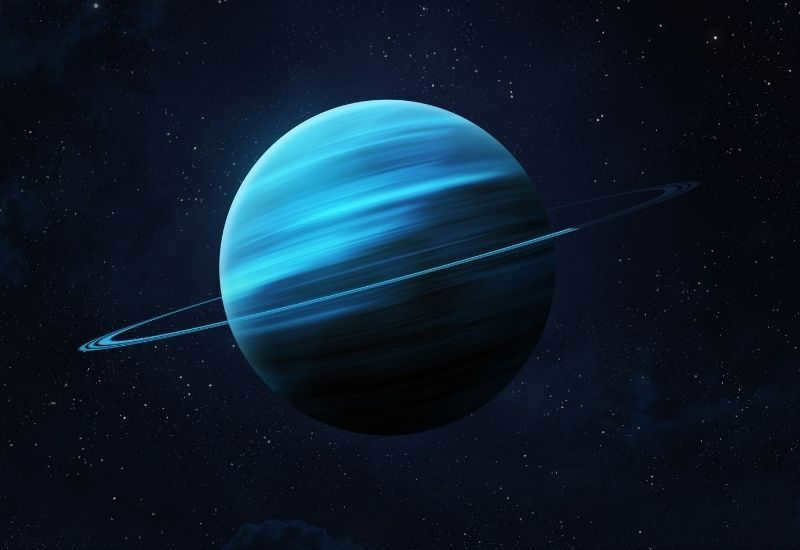
Due to insufficient available data, the diurnal and nocturnal temperature variations on Uranus have not yet been accurately determined. Observations of the stratosphere began in the 1970s, but a comprehensive analysis of the collected data has not been completed yet. Currently, the data from the tropopause is utilized as a reference:
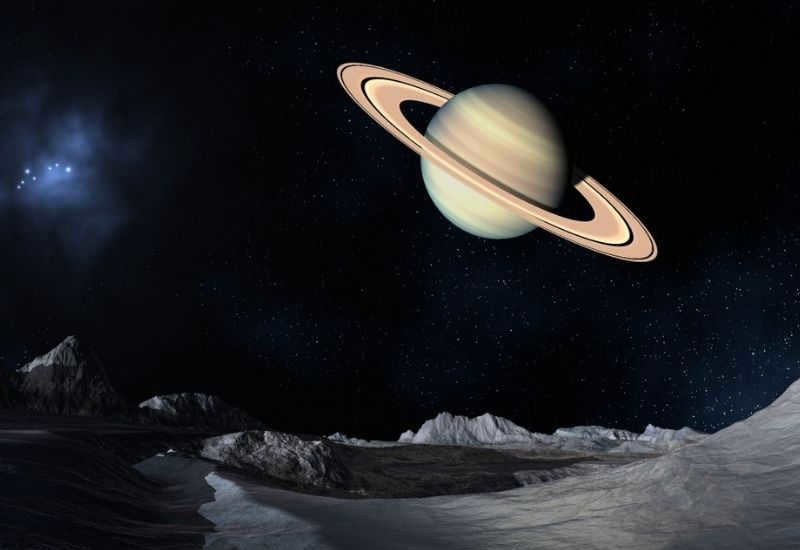
Despite the fact that the minimum and maximum temperatures on Uranus remain unexplained, researchers have begun to speculate about the possibility of the ice giant becoming a potential habitat for humanity in the future. This speculation is based on the abundance of water reserves and the relatively pleasant temperatures that can be found at specific depths.
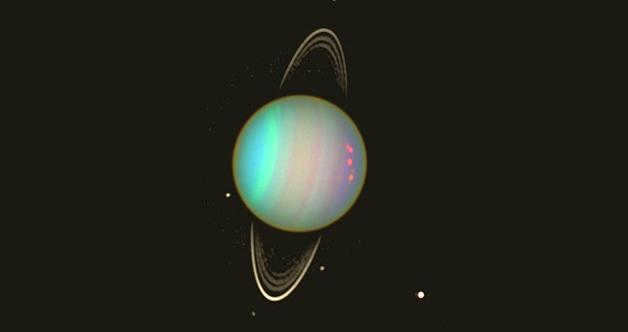
Compared to the Sun, Uranus is positioned as the seventh celestial body within our solar system. Situated between Saturn and Neptune, this unique planet has an axial tilt measuring 98°. Notably, Uranus was the initial planet to be officially identified through the use of a telescope. Historically, its gradual orbit and subdued luminosity rendered it challenging to discern with the unaided eye. With an impressive 13 rings and a equatorial diameter measuring 51,118 kilometers, Uranus is a planet of remarkable proportions. This celestial body requires a lengthy 84-year span to complete a full revolution around the Sun, a duration exceeding the average human lifespan throughout much of the globe. In terms of mass, Uranus boasts approximately 15 times the weight of Earth.
Uranus’s Temperature Range
The temperatures of the various planets vary greatly, with some being hot and others cold, depending on their proximity to the Sun. By applying this principle, we can deduce that Uranus experiences relatively low temperatures due to its considerable distance from the Sun. In fact, Uranus’s temperature can drop to below -232° C. These extremely frigid temperatures indicate that Uranus is one of the coldest planets in our solar system. However, it is worth noting that Pluto, previously considered the coldest planet, no longer holds the title after being reclassified.
Theories surrounding the frigid planet
Summary
Ongoing investigations are being conducted to ascertain the origin of the exceptionally frigid conditions observed on Uranus. Nevertheless, it is important to highlight that Neptune can also be classified as the most chilling planet within our solar system in terms of average temperatures.
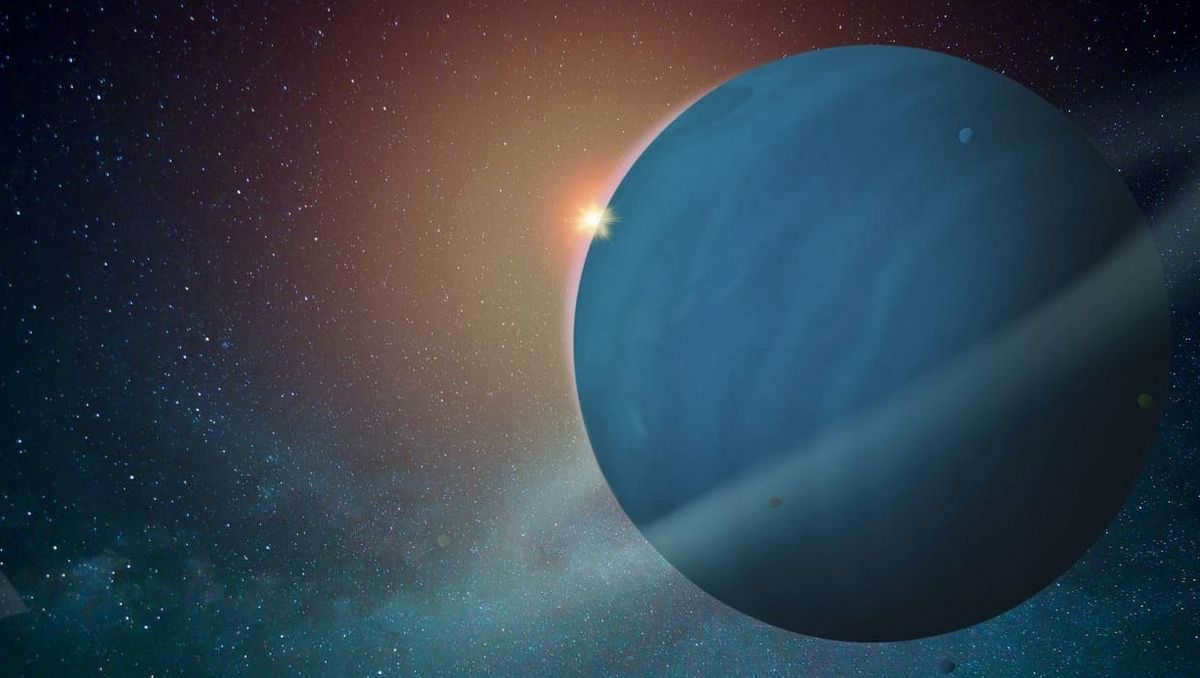
Every planet within our solar system possesses its own distinct characteristics. They each vary in terms of size, atmosphere, and temperature. Uranus, a planet that can be observed in the night sky, was initially believed to be an ordinary comet. Later on, it was classified as a faint star. Until now, there has been limited research conducted on this planet, which makes it difficult to determine the accuracy of its description and the extent to which it relies on the Sun. However, this article will provide information on some of the known parameters, including the surface appearance and diameter of Uranus.
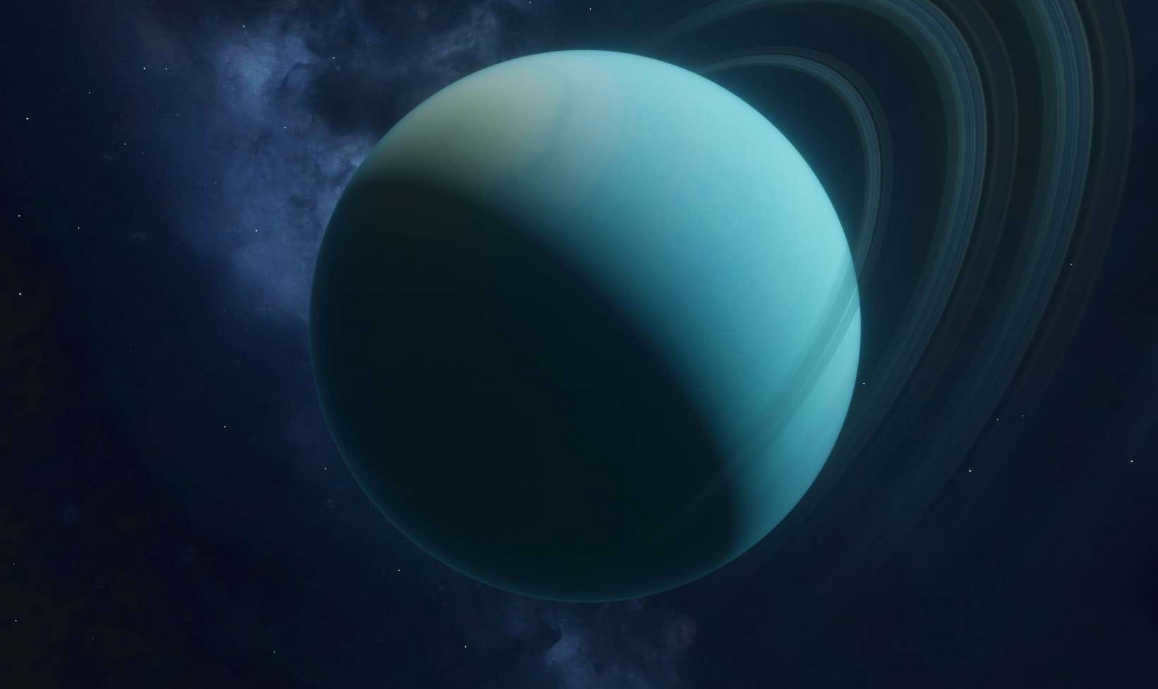
Composition
There are multiple hypotheses concerning the composition of Uranus. Some experts posit that the planet is composed of two distinct layers. Conversely, others maintain that Uranus adheres to the classical model, consisting of three distinct layers.
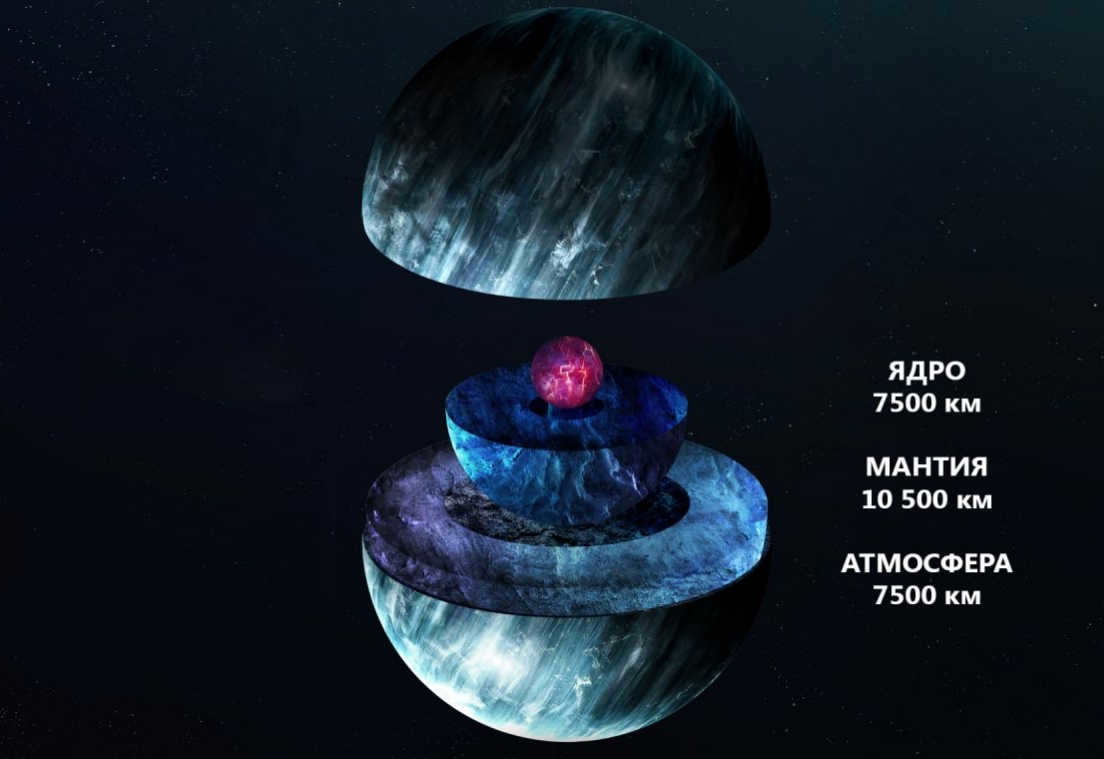
The atmosphere, which is located at the farthest distance from the center, is a layer consisting of gases. This important data was obtained during the launch of the spacecraft, as it was able to conduct a thorough spectral analysis of the atmospheric composition.
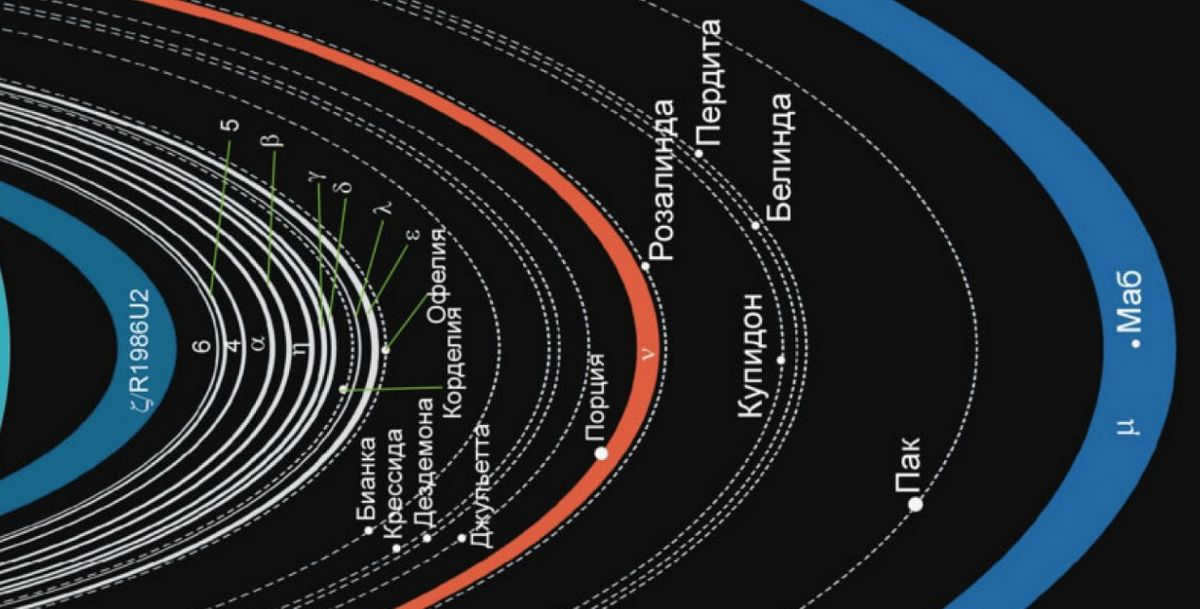
The atmosphere of Uranus begins at an elevation of 300 kilometers above its surface.
Uranus shares similar characteristics with other gas giants in terms of its composition. The atmosphere consists of approximately 70% hydrogen, along with helium and methane. The winds on Uranus are known to be quite powerful.
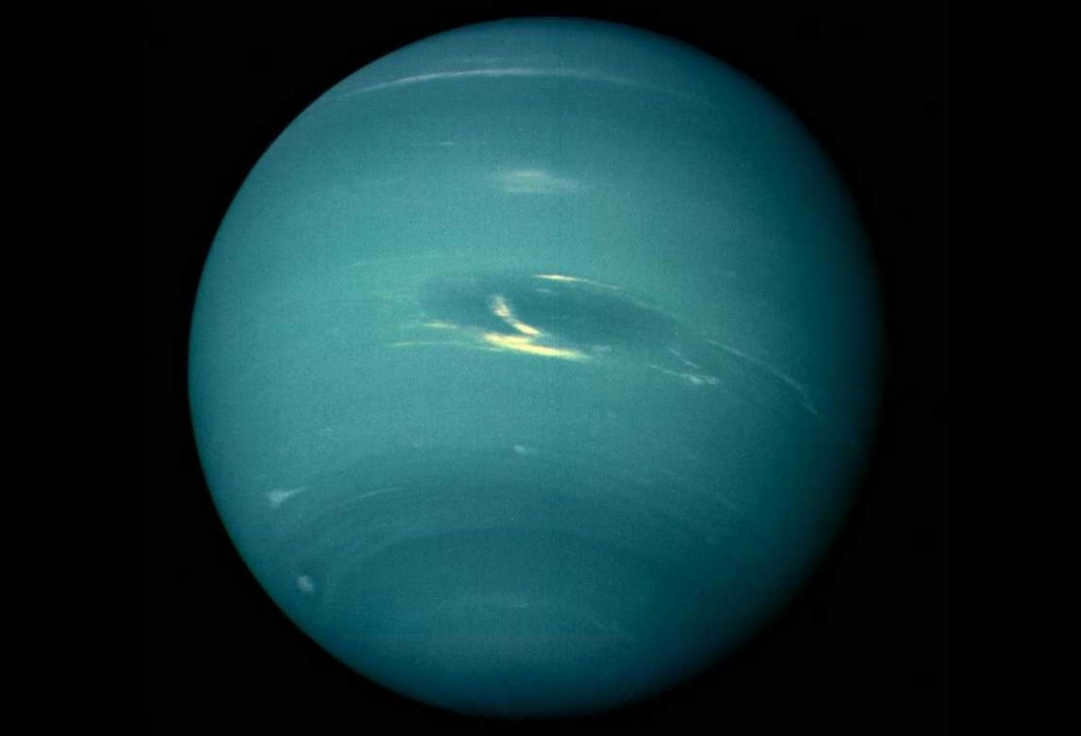
The average velocity of the currents is 240 meters per second. Below the atmosphere lies the mantle. The surface pressure is approximately 1 bar. The planet’s mantle resembles an ocean.
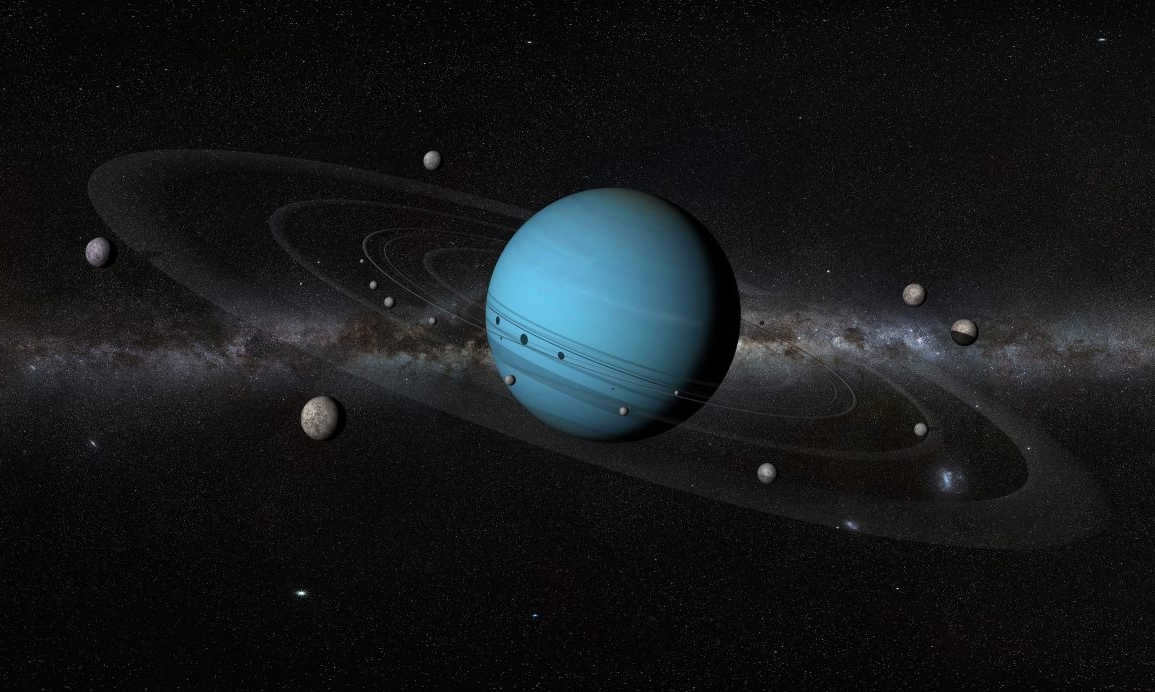
Water contains dissolved ammonia and dense methane, both of which are highly conductive. This characteristic places Uranus in the ice giant category.

Unlike Jupiter and Saturn, Uranus lacks metallic hydrogen on its surface. As you delve deeper into the planet, the pressure and temperature increase significantly.
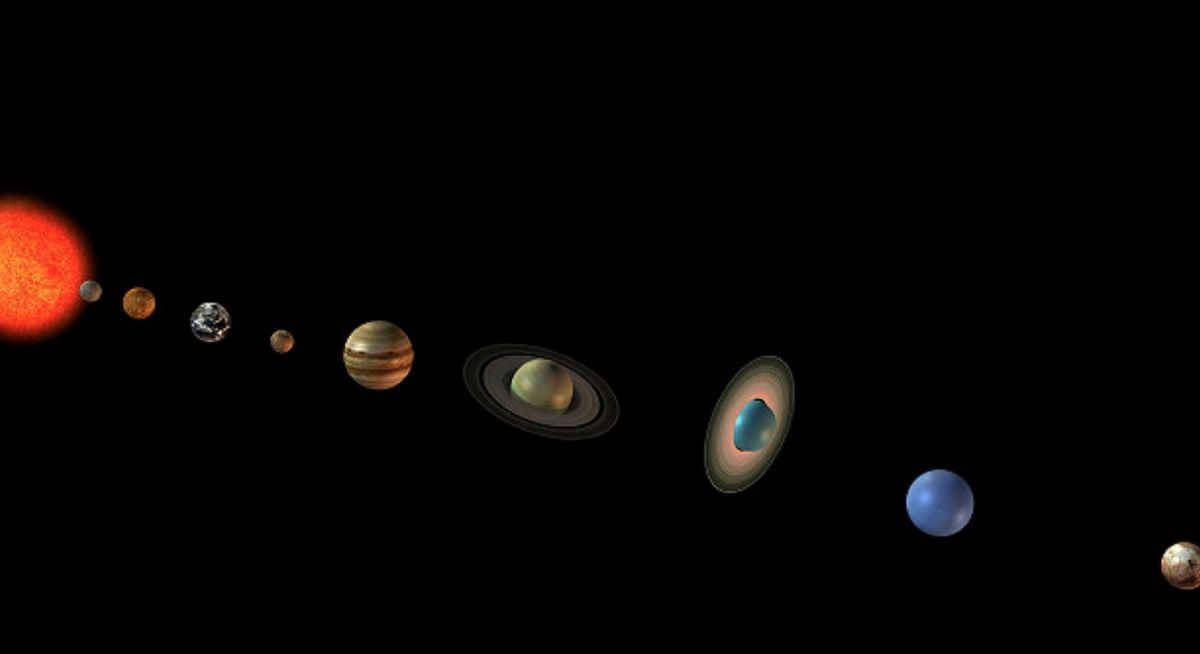
The central area of the planet contains a compact and scorching core. The core’s temperature reaches a staggering 7,000 K, while the pressure within it exceeds 6 million atmospheres. Remarkably, the core’s size accounts for a fifth of the planet’s overall radius.
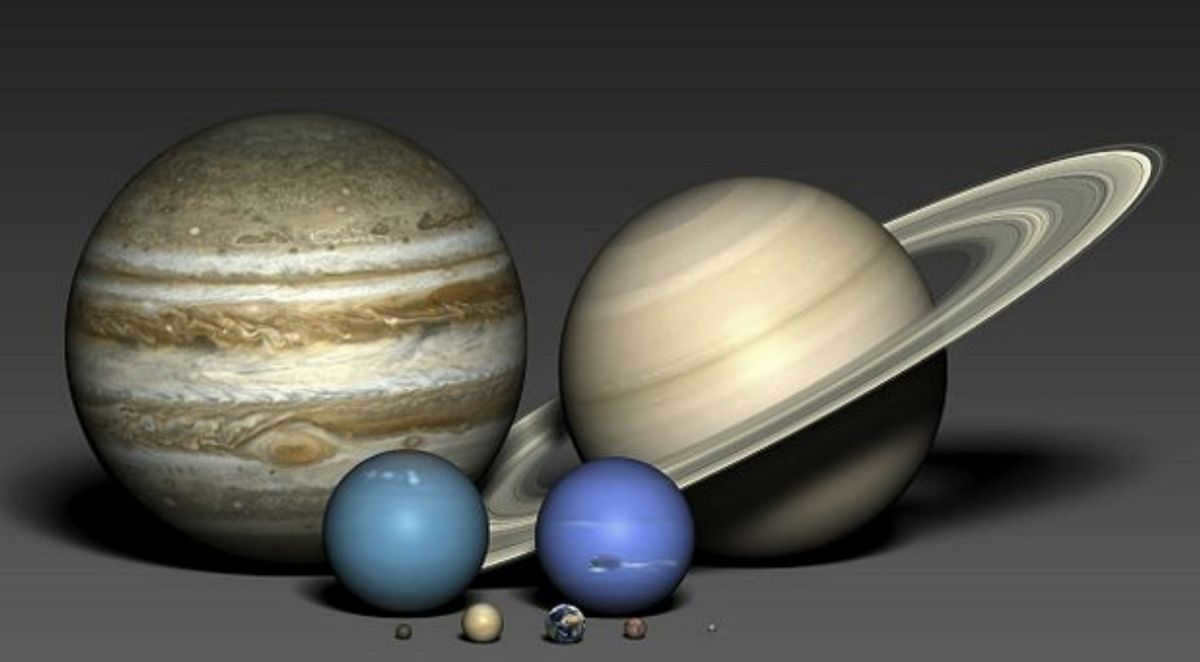
There is a belief that it is made up of a combination of iron and rock.
The density measurements are recorded at 9 grams per cubic centimeter. One of its notable features is the existence of a magnetic sphere that contains charged particles.
Distinguishing features of the magnetic field
Uranus possesses a unique magnetic field that sets it apart from other celestial bodies. The rotation of Uranus plays a key role in shaping this distinctive characteristic. Additionally, unlike other planets, Uranus lacks an internal energy source.
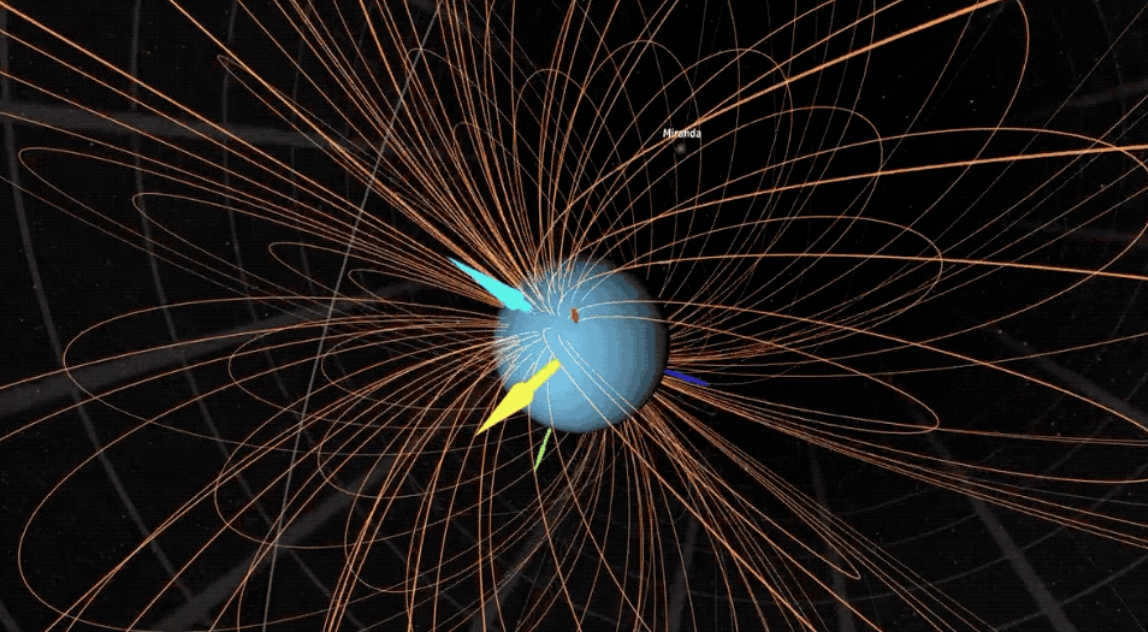
Initially, the magnetic axis is displaced from the central region by one-third of the radius, resulting in a 60-degree angle. Moreover, the intensity of the magnetic field undergoes continuous fluctuations. Lastly, there exist distinct poles for the magnets.
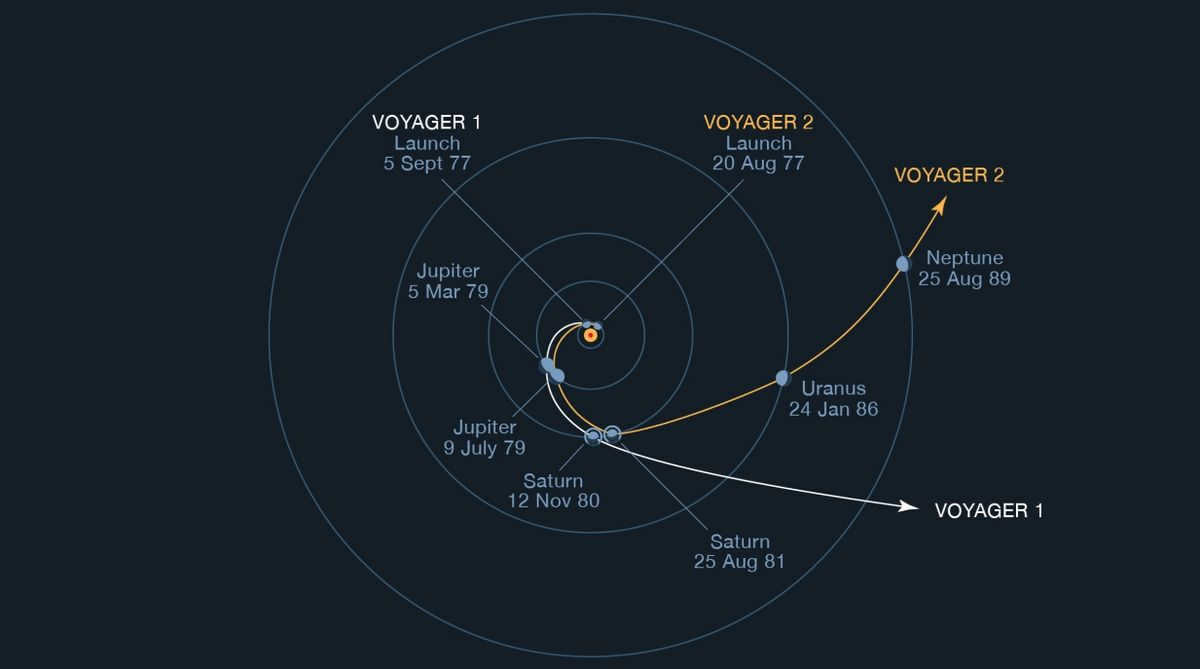
Aside from the primary pair, there exist a number of additional feeble ones.
The core is responsible for generating the magnetic field of the majority of planets in the solar system. However, Uranus stands out as an exception. In reality, its magnetic field is generated at the ocean’s surface, which is composed of aqueous ammonia.
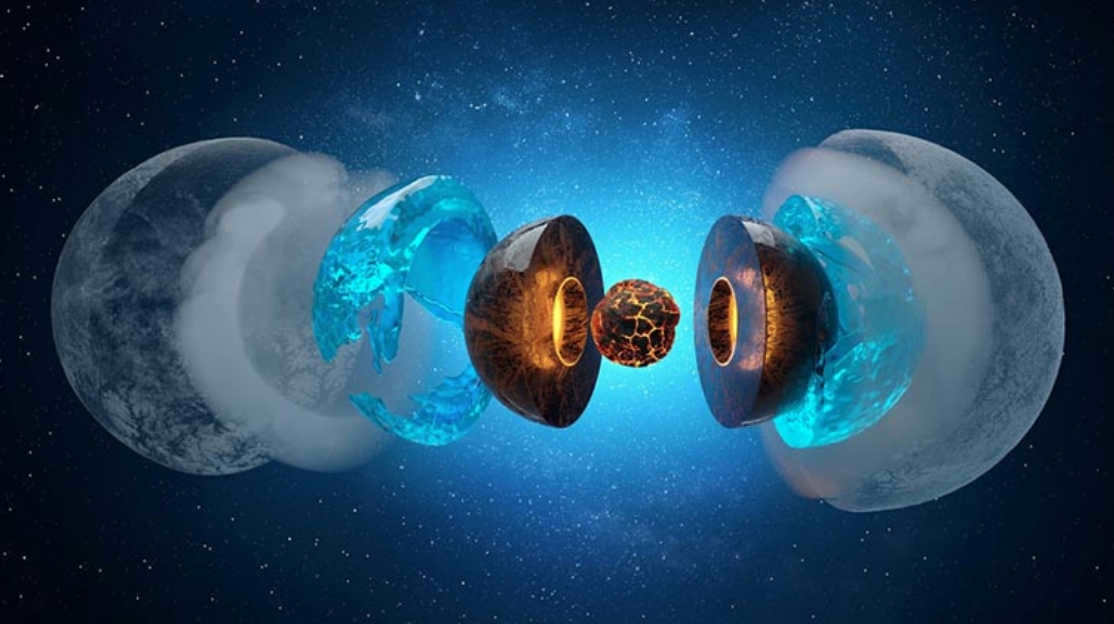
The magnetic field lines of the magnets shape the force lines, which extend away from the surface for considerable distances. On the side facing the sun, the magnetic flux encounters resistance from the solar wind, impeding its further movement.
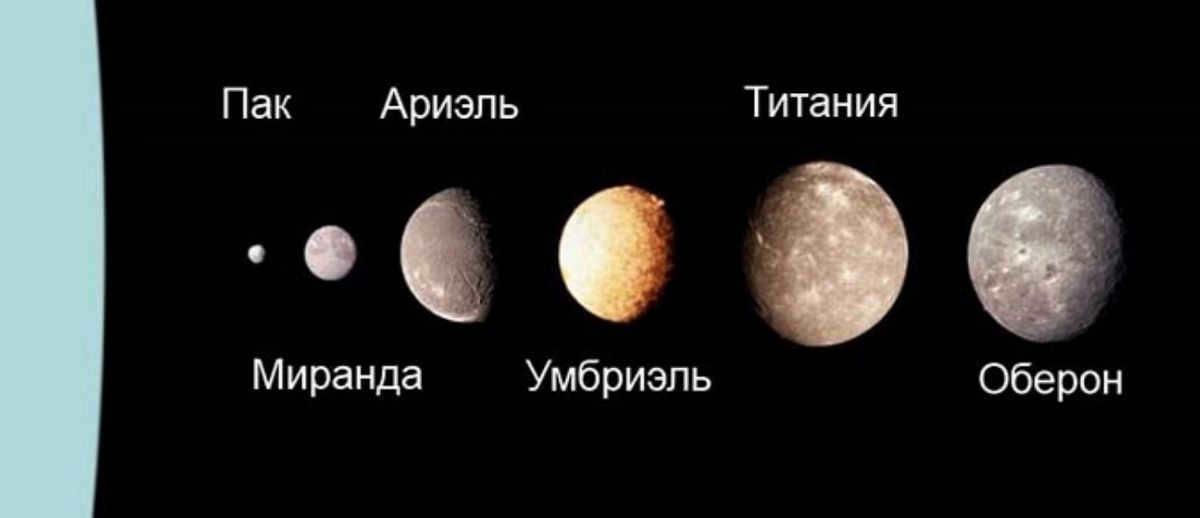
Conversely, the movement of magnetic waves is possible, but their propagation in outer space is limited. This is due to the fact that the rotational axis of Uranus is inclined towards the magnetic field.
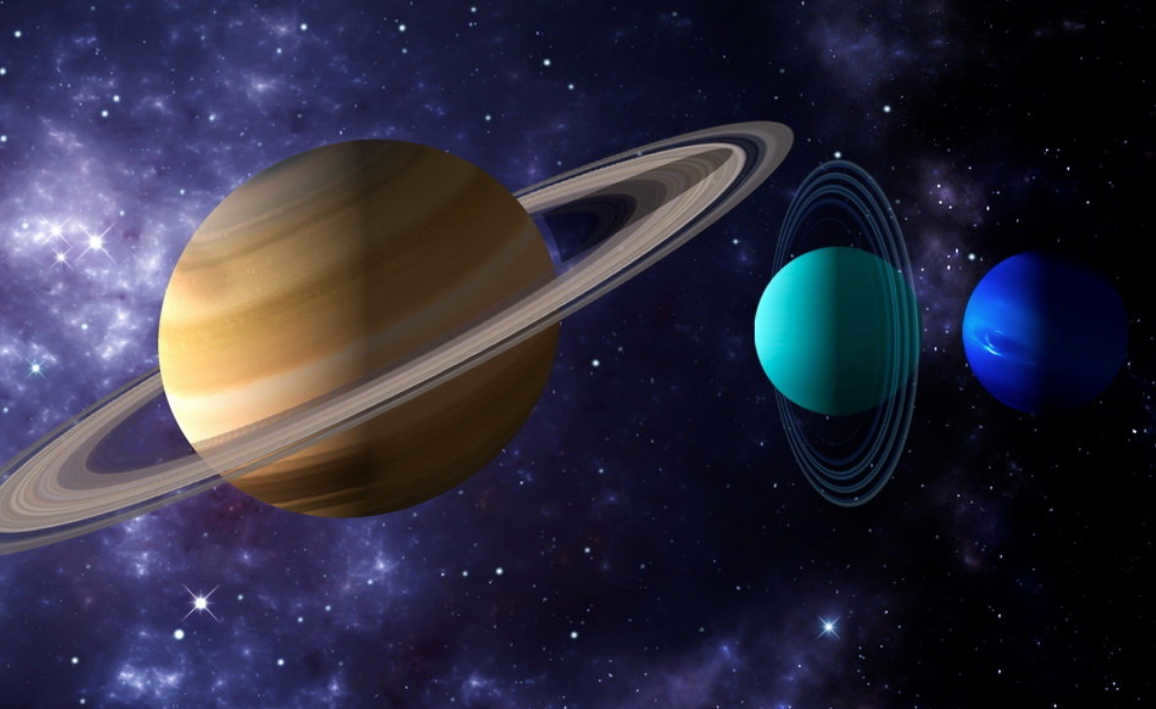
As soon as the planet begins its motion, the lines of force accumulate, creating a stack on top of one another. This stacking results in the formation of a spiral tail that spans a length of 10 million kilometers, extending in the opposite direction of the Sun.
Physical characteristics
Uranus has a volume that is over 60 times greater than that of Earth. Its mass is just 14 times that of our planet. Researchers have proposed that the core of Uranus is several times larger than that of Earth.
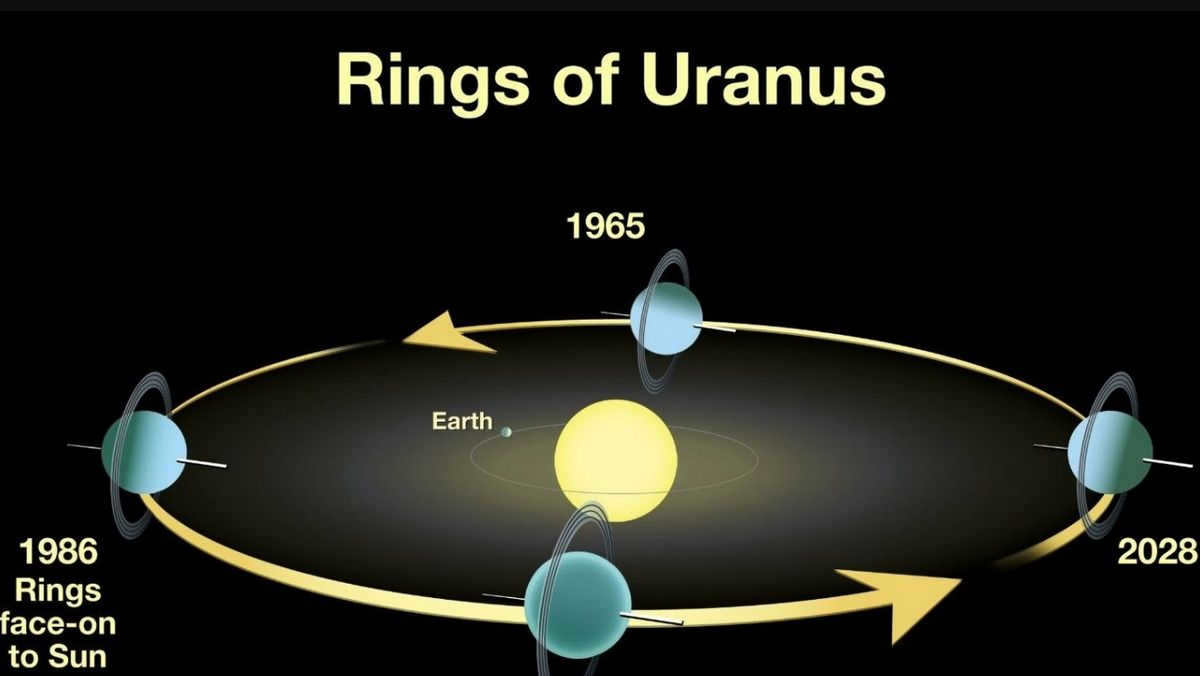
There is a belief that there is no core present in Uranus. According to this theory, the planet is composed of a massive amount of snow, which is then covered by a layer of gas. Both Earth and Uranus share a similar color palette, as they are both predominantly blue in appearance.
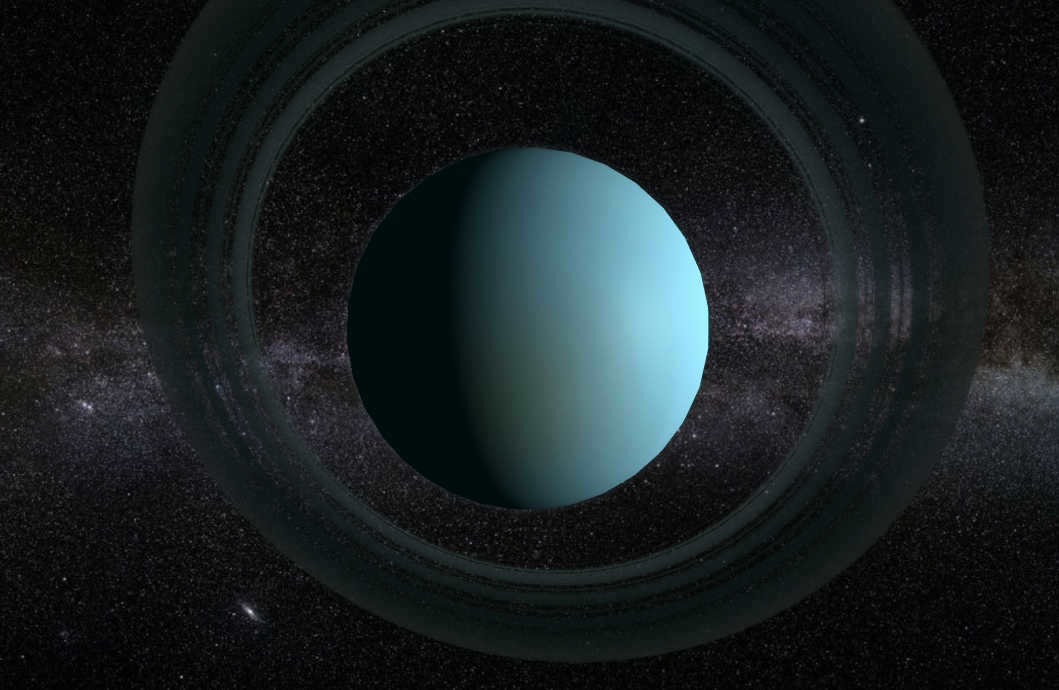
W. Herschel is credited with the discovery of Uranus during the latter part of the 18th century. Prior to this, the planet was observable in the night sky, but it was mistakenly identified as a star.
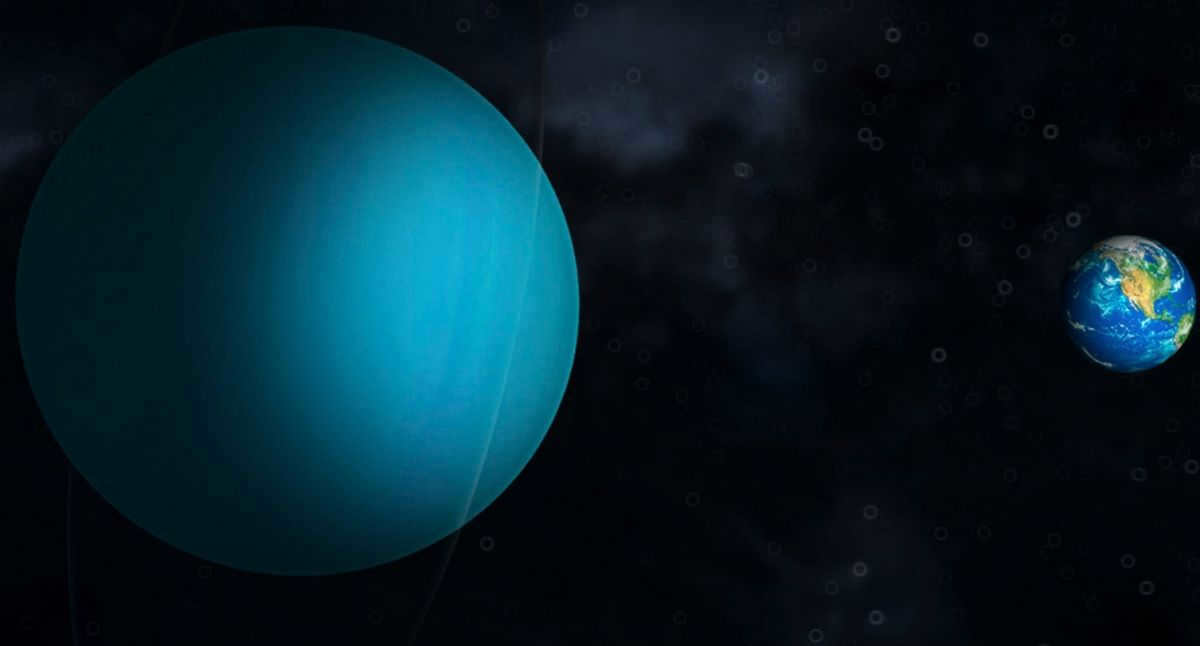
There is no metallic hydrogen present in the core of Uranus. Instead, there is a significant abundance of various forms of ice. What sets Uranus apart from other planets is its unique axial tilt, which is positioned on its side.
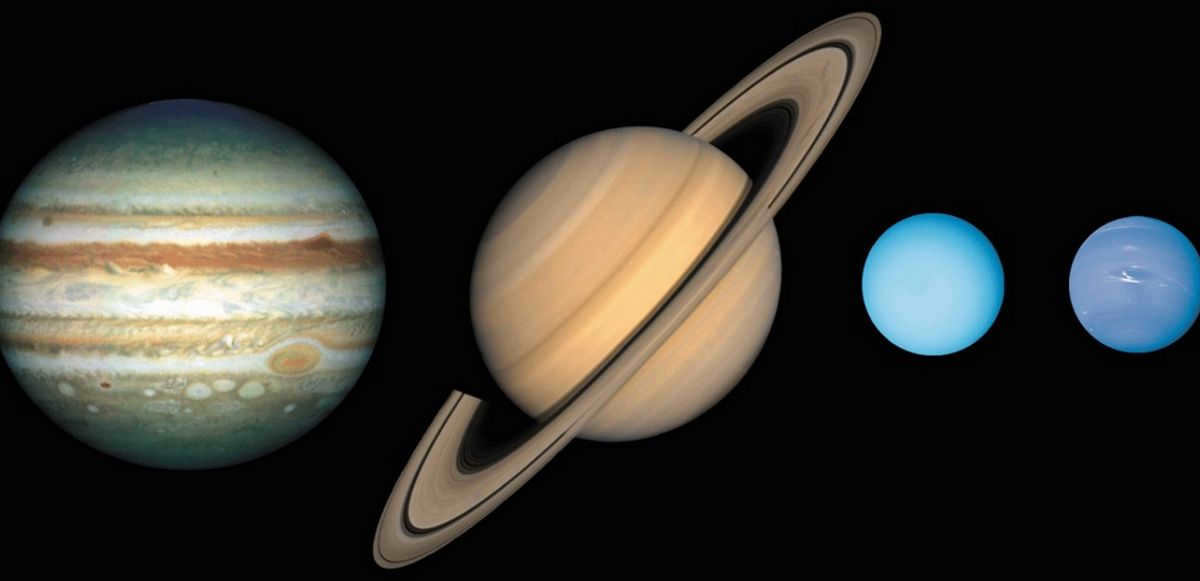
As a result of this phenomenon, Uranus experiences not only polar but also equatorial and mid-latitude solar exposure. The duration of Uranus’ revolution around the Sun is approximately 84 years in Earth time.
During half of this revolution, the planet experiences daytime, while the other half is characterized by nighttime.
As previously stated, Uranus contains a significant amount of ice in its atmospheric layers, making it the chilliest planet in our solar system.

What is the typical temperature on Uranus? The temperature in the atmosphere drops to -224°C. Simultaneously, this surface temperature remains constant, both during daytime and nighttime. Unlike other giant planets, Uranus emits more heat than it receives from the central system.
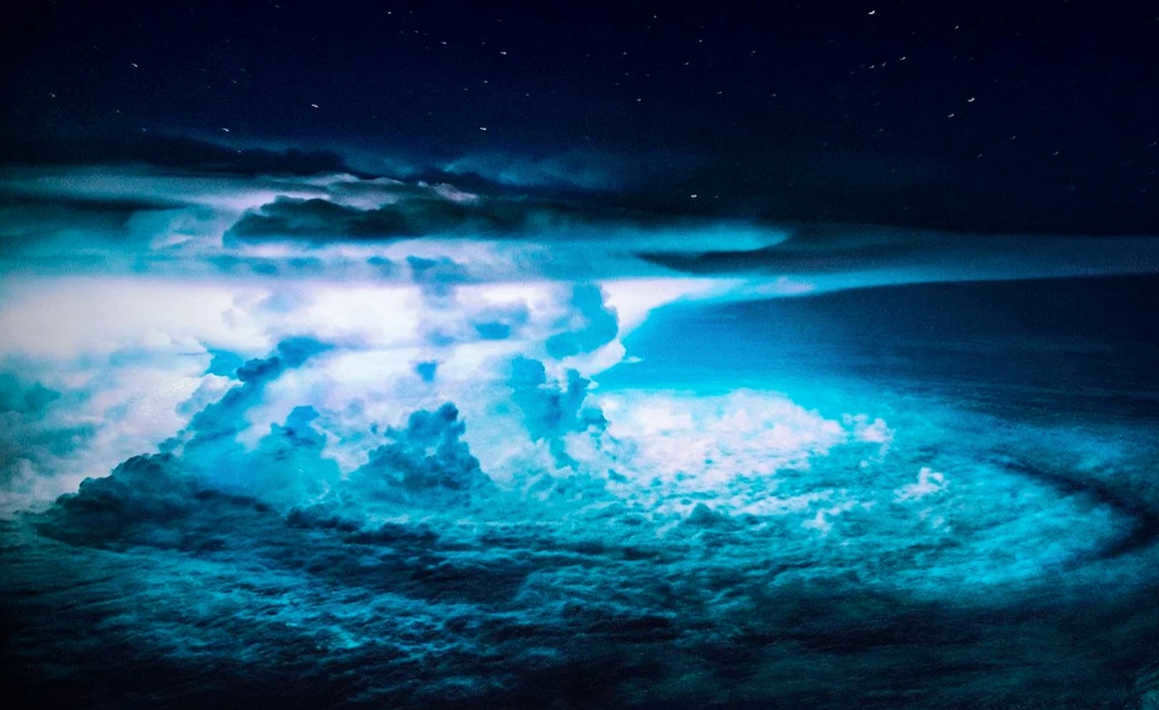
Neptune, similar to Uranus in various ways, emits nearly three times the amount of heat it absorbs. The release of this energy occurs when gravity compresses and the core rotates. Nevertheless, the heat release of Uranus is multiple times less compared to that of Earth. As a result, there is no heat being emitted at all from Uranus.
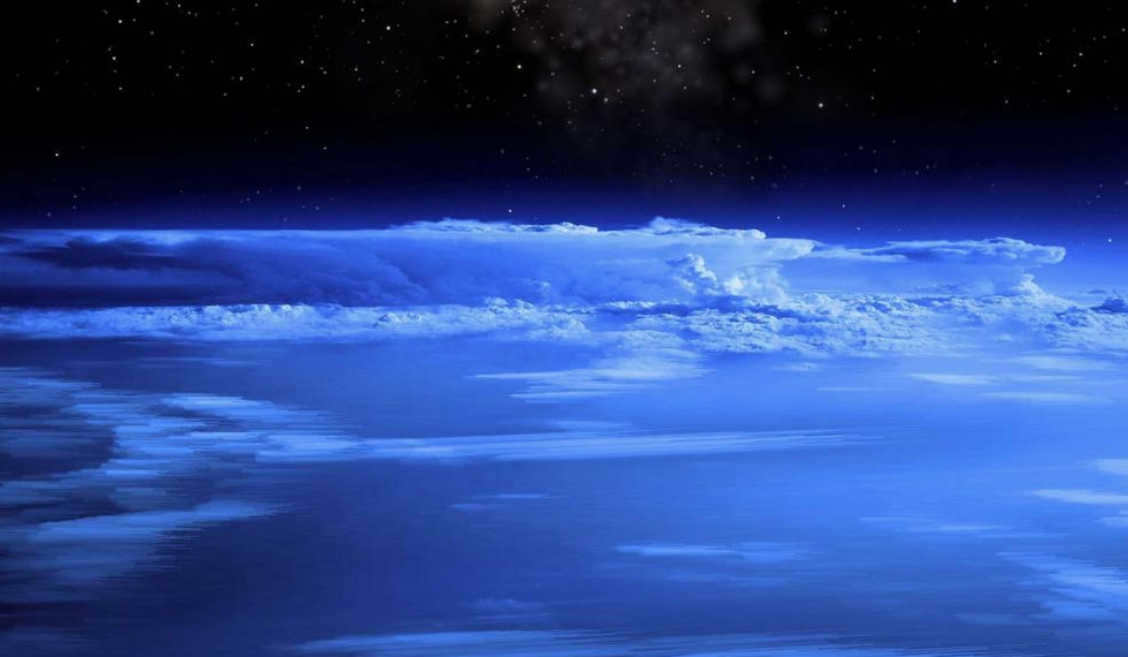
Researchers have been unable to comprehend the reasoning behind this phenomenon. One theory postulates that the heat emitted by the nucleus is impeded from permeating through the atmospheric stratum. There seems to be a hindrance present that obstructs the transfer of thermal energy.
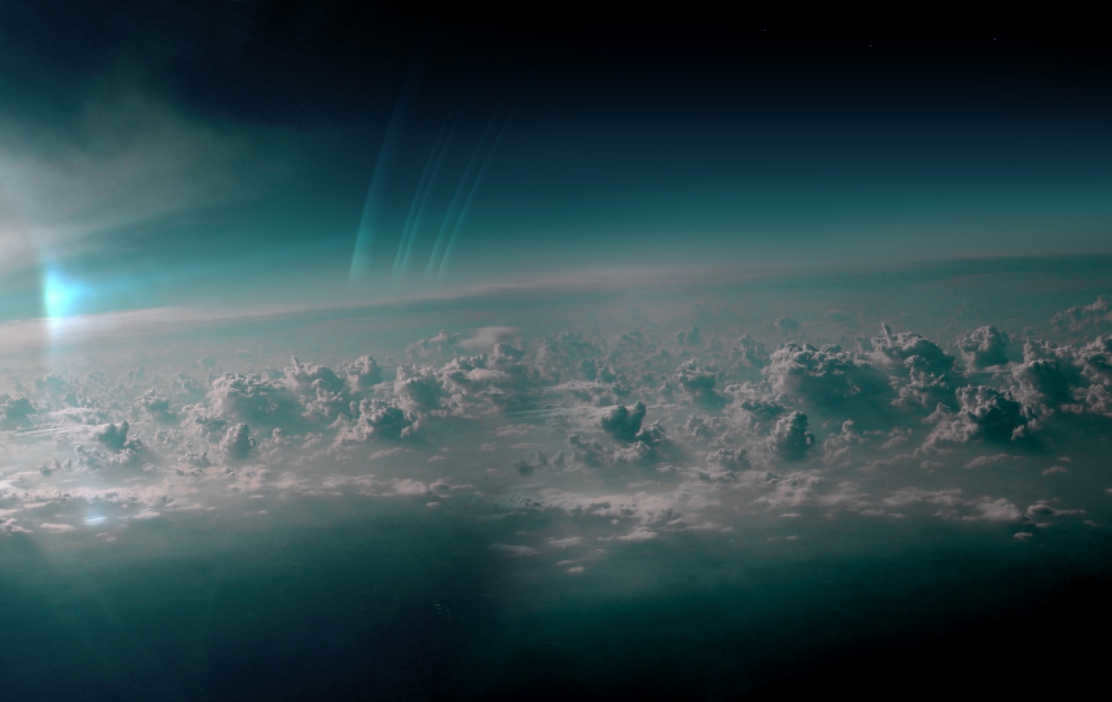
However, in accordance with the fundamental principles of physics, heat cannot simply vanish.
It must be transferred somewhere. As a result, scientists have put forth the hypothesis that there exists liquid water within the planet to which the heat is transferred. This possibility raises the likelihood of life existing on the planet.
Understanding the Transformation of Seasons
During the latter part of the 1980s, a team of scientists sent a unique contraption into outer space with the purpose of approaching Uranus and capturing images. This groundbreaking endeavor provided valuable insights, revealing the serene nature of the planet and the absence of any tumultuous weather disturbances within its atmosphere.
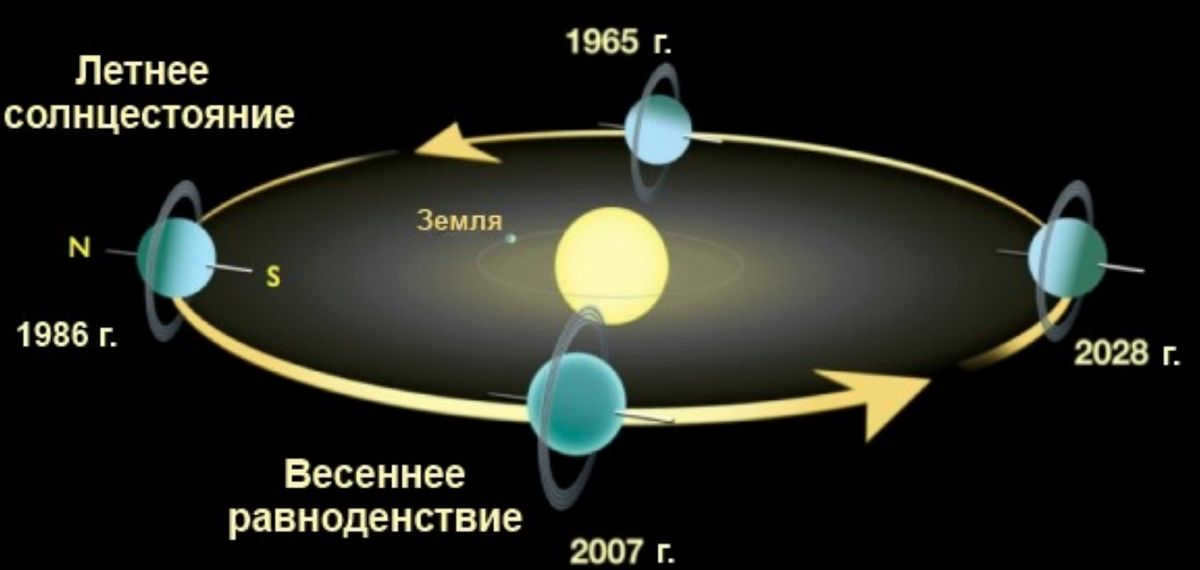
After a while, with the aid of advanced telescopes, a shift in the atmospheric conditions became observable. The inclination of Uranus’ axis is responsible for the alteration of seasons.

While the Sun shines on one pole for a period of 42 years, the opposite pole endures a cold winter marked by freezing temperatures.
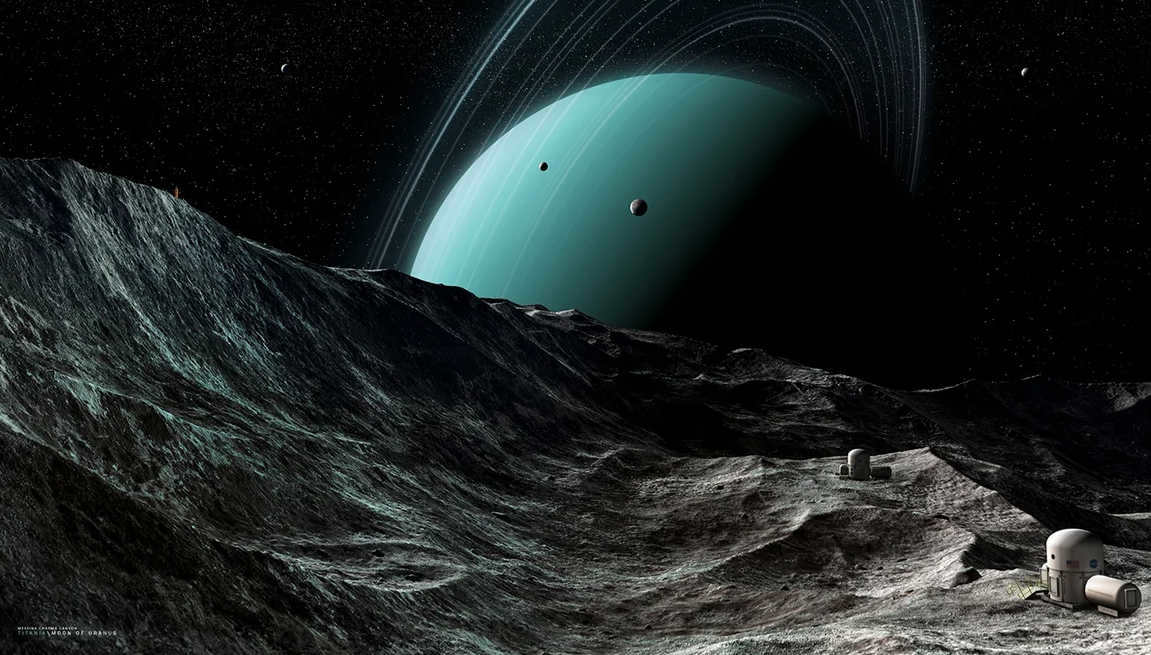
Strong winds are observed at this location. The transition between different seasons on the planet Uranus has not been thoroughly investigated.
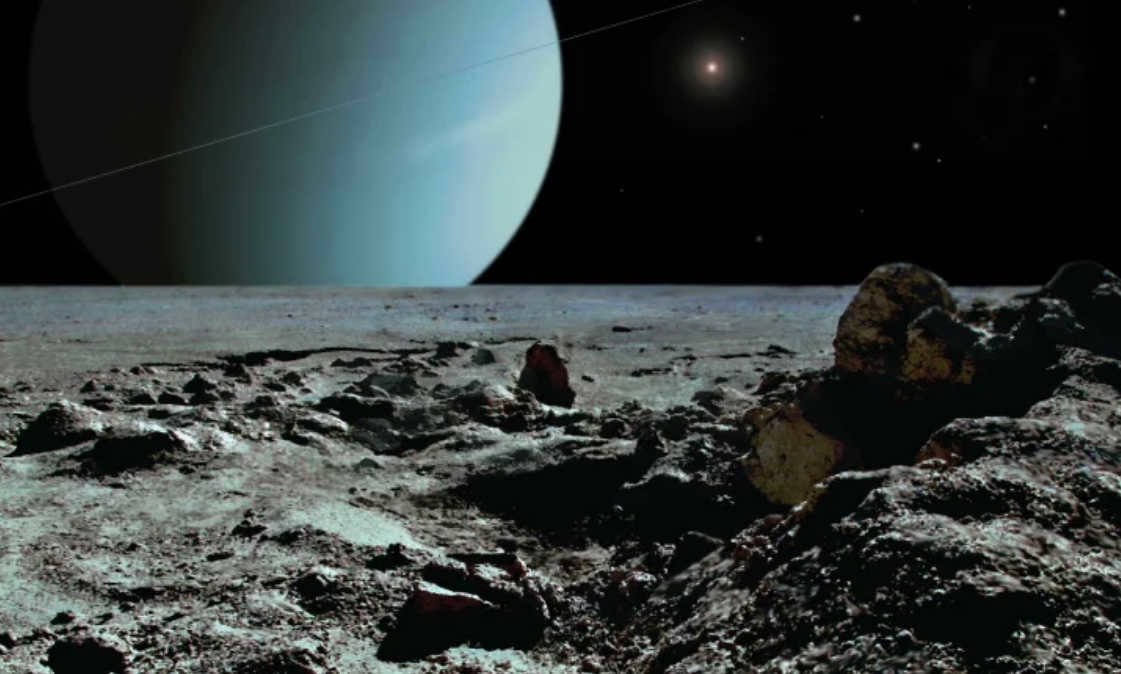
There was a notable shift in temperature and weather patterns in 2004.
During the month of March, a significant number of clouds gathered around the planet. The wind velocity reached an astonishing 820 kilometers per hour. Intense thunderstorms were observed and persisted for a duration of six months.
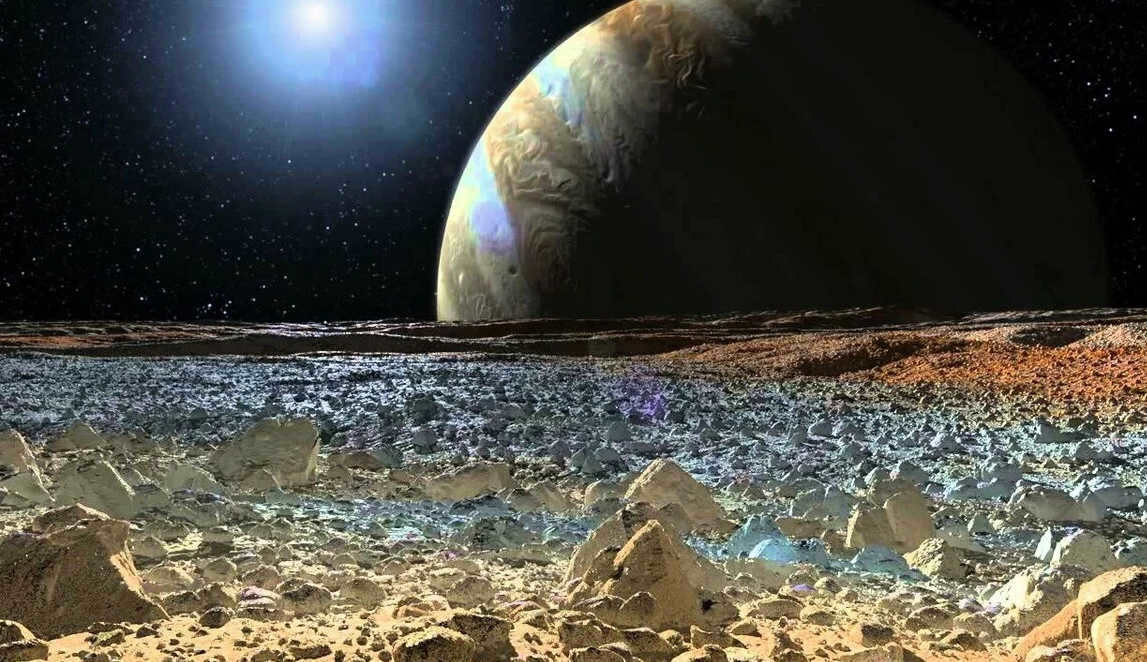
Scientists have documented the existence of an atmospheric vortex after a period of two years. While certain clouds dissipate within a few hours of their formation, others remain unaltered for several decades.
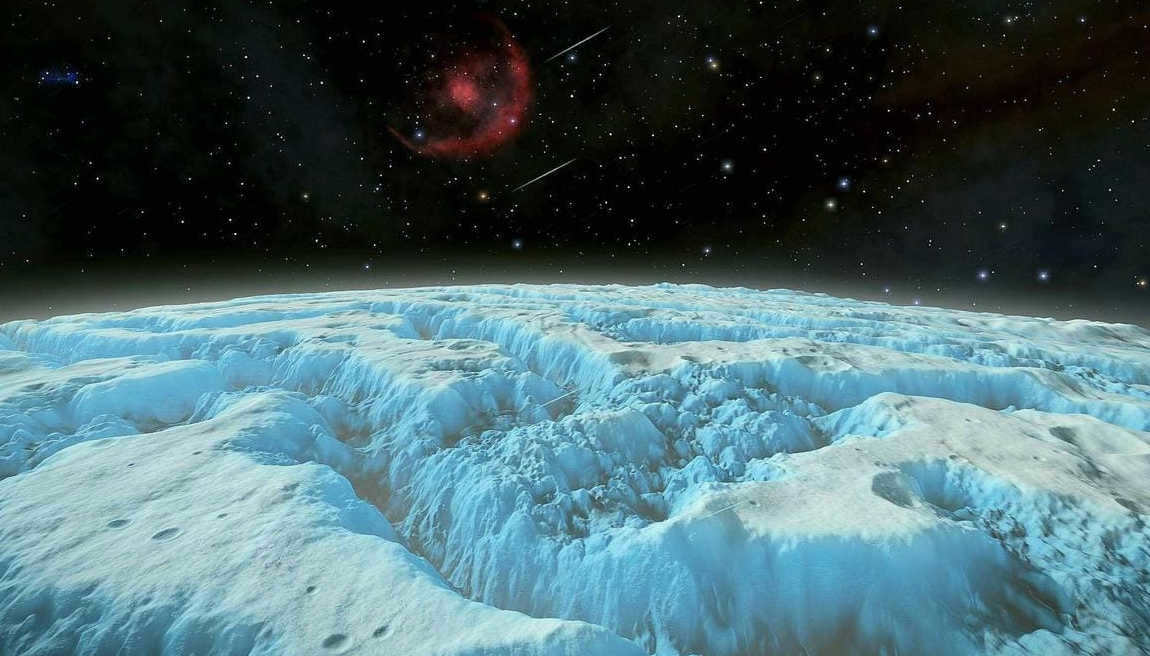
Uranus exhibits four distinct seasons, including:
- winter in the south;
- summer in the north;
- the equinox period;
- the southern solstice.
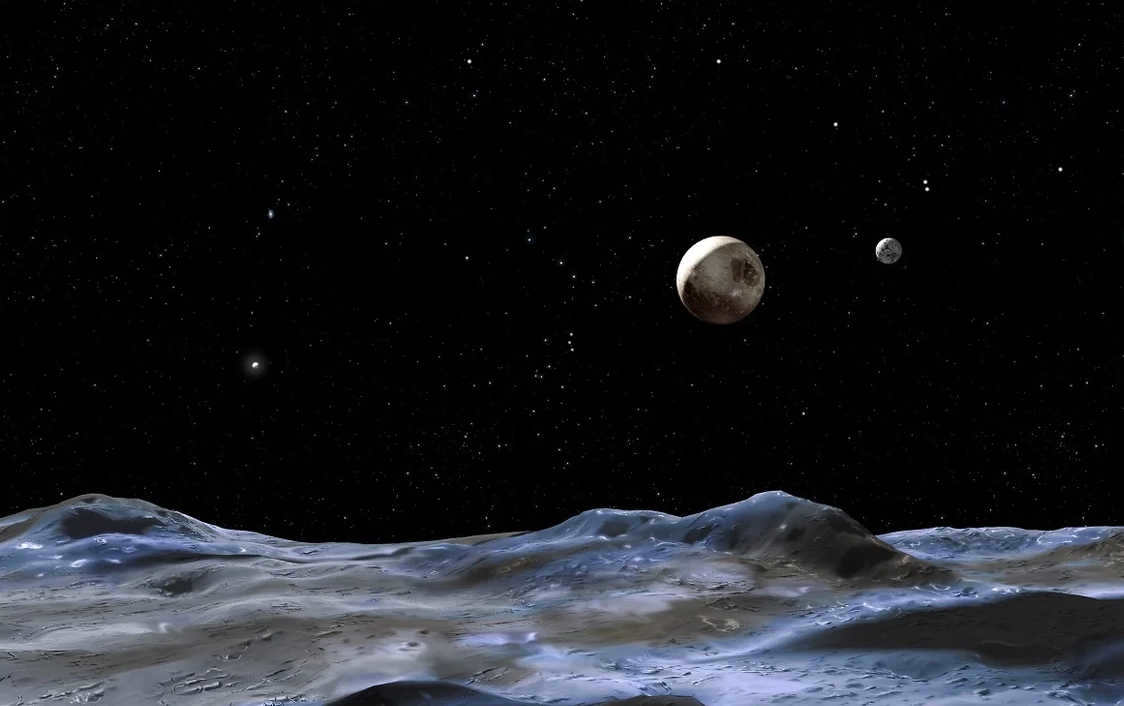
As the solstice draws near, both hemispheres experience similar conditions. They are either bathed in the radiance of the system’s core or enveloped in celestial obscurity.

Now that you are aware, Uranus holds the title of being the coldest celestial body in the entire solar system due to its great distance from the Sun. It maintains a bone-chilling temperature of -224°C, regardless of the time of year or day.
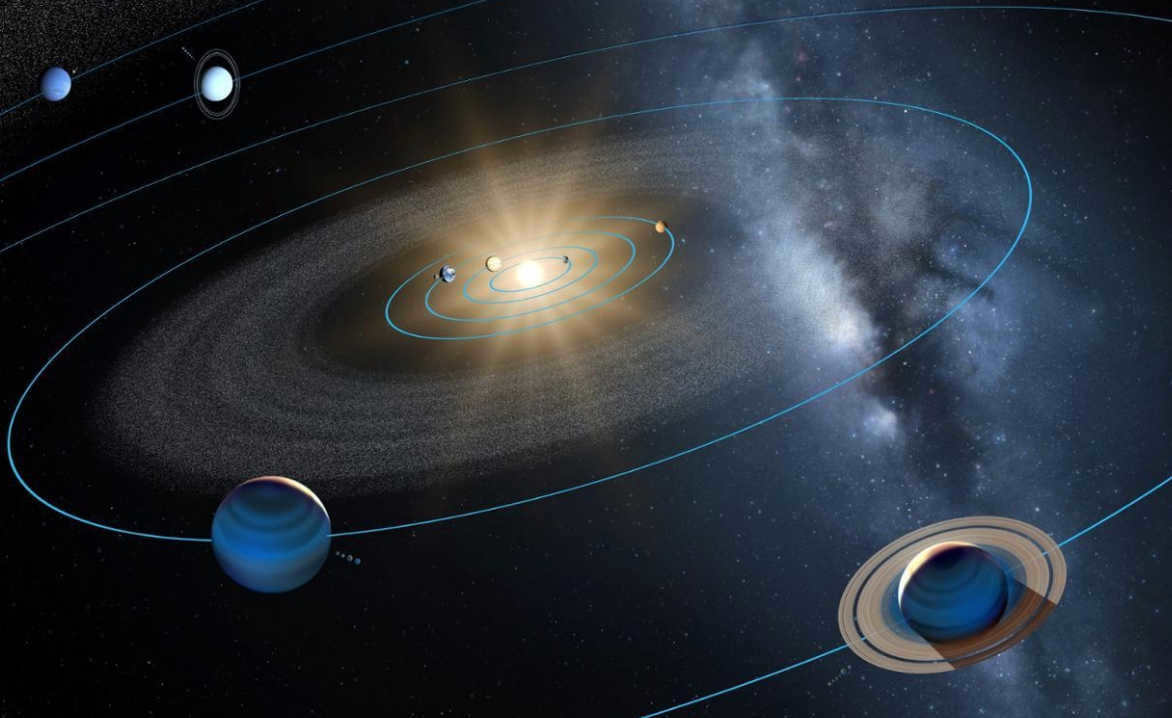
Due to these factors, along with the presence of magnetic spheres, the complete exploration of this planet becomes an unattainable goal.
There are numerous planets within our solar system, and each one holds immense fascination for scientists. Over the course of centuries of research, we have been able to uncover intriguing details about Uranus, including its distinctive color, temperature, and a comprehensive photo and description of this celestial body.
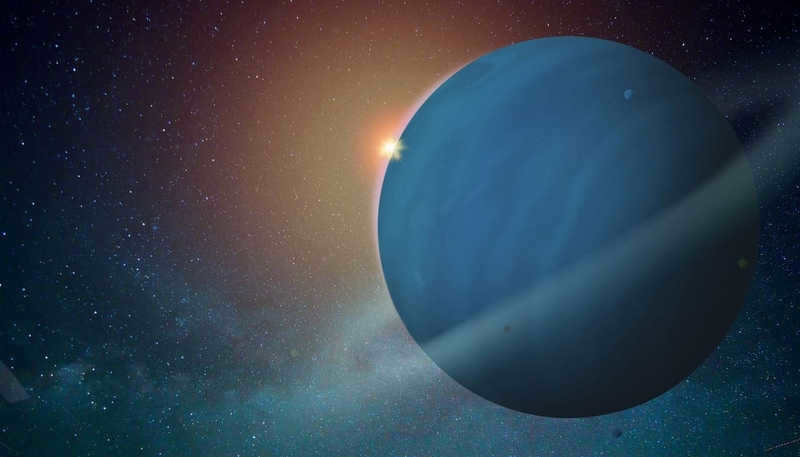
General information
Uranus can be found in the seventh position from the center of our solar system, which is the Sun.
This massive planet falls under the category of icy bodies and takes its name from Uranus, the celestial deity in Greek mythology. It is situated between Saturn and Neptune, and beyond them lies the Kuiper belt. One of Uranus’ distinctive features is its magnetosphere, which is a defining characteristic of all giant planets.
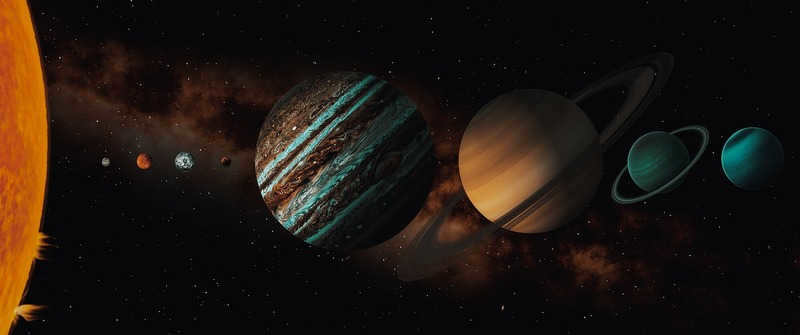
Unlike the rest of the planets in our solar system, Uranus has a unique orientation. As a result, it travels at an inclination of nearly 98 degrees compared to its orbital plane. Researchers have successfully established the planetary configuration.
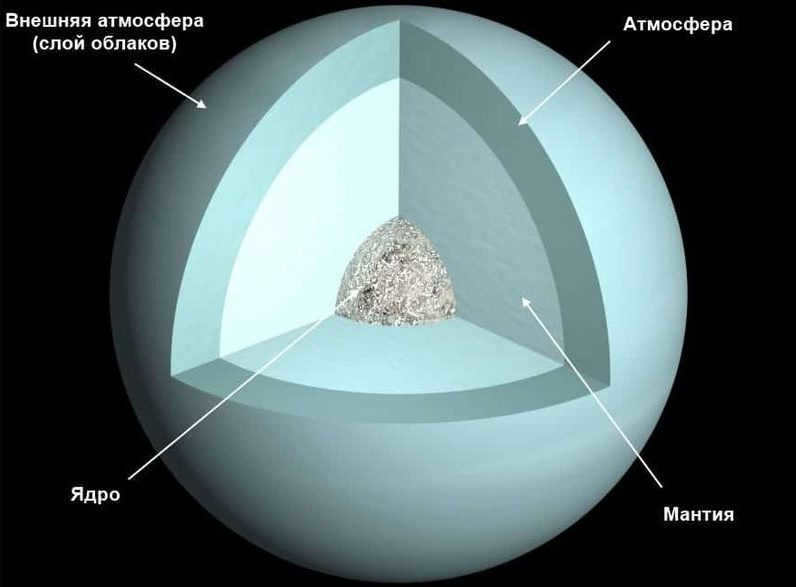
It is believed that Uranus consists of three components. At its core lies a composition of rocks. Surrounding this is a shell resembling a massive ice floe. The outermost layer constitutes the atmosphere, predominantly composed of hydrogen and helium. Encircling Uranus are a series of rings comprised of diverse particles, ranging in size from micrometers to meters.
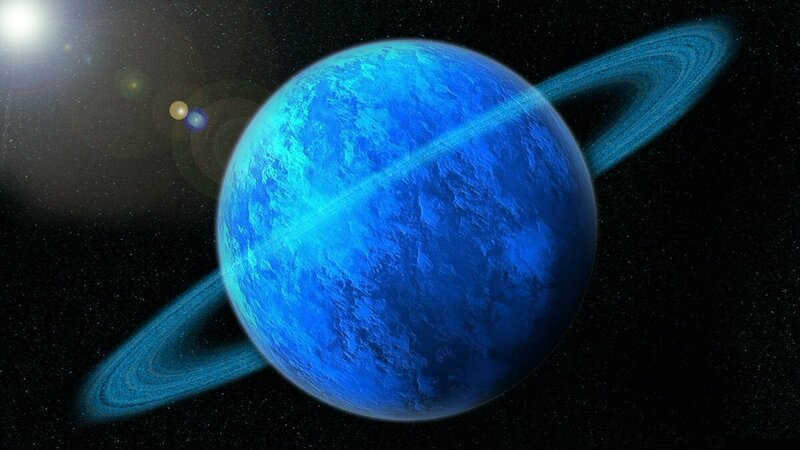
Characteristics of Uranus’ Orbit
On an average, Uranus is approximately 3 billion kilometers away from the center of our solar system. The perihelion, which is the closest point to the Sun, is situated at a distance of 2.75 billion kilometers. Conversely, the farthest point from the Sun, known as the Aphelion, is located 3 billion kilometers away.
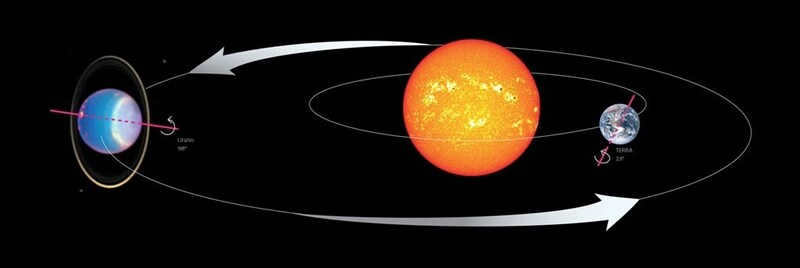
Uranus, like Earth, takes 84 years to complete a full revolution around the center of the universe. It travels in its orbit at a speed of 6.8 kilometers per second. Interestingly, one year on Uranus is almost 370 days long.
To journey from our planet to Uranus, one would need to traverse a distance of 2.6-3.15 billion kilometers.
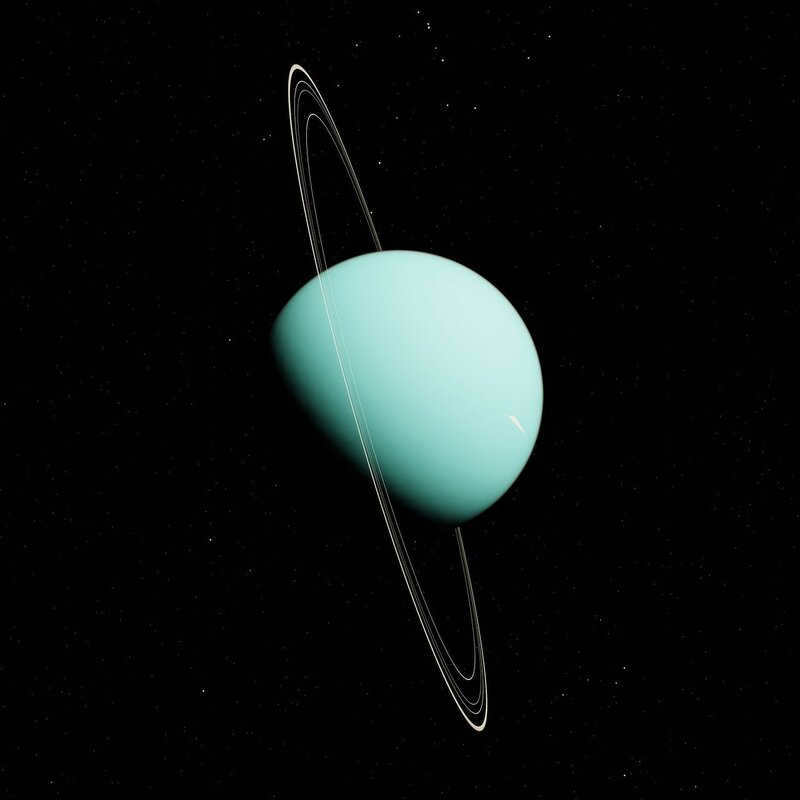
Satellites
In the vast expanse of darkness surrounding Uranus, a collection of 27 satellites silently orbit. Each of these celestial objects is named after renowned characters from the literary works of Shakespeare and Pope.
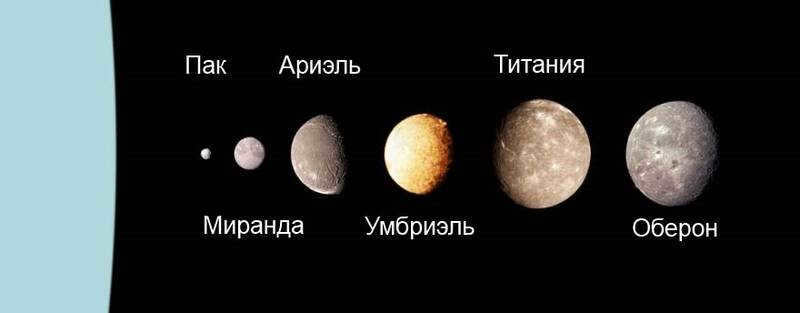
Among the satellites of Uranus, the most renowned and widely recognized ones are the ones that stand out due to their considerable size:
- Oberon, an impressive satellite with a diameter of approximately 1.5 thousand kilometers. Positioned at a distance of 582,000 kilometers from the ice giant, this satellite completes a full orbit around the planet in nearly 2 weeks, equivalent to the duration of 2 Earth weeks. Interestingly, Oberon always presents the same side to Uranus. Its surface temperature is estimated to be around -200° Celsius.
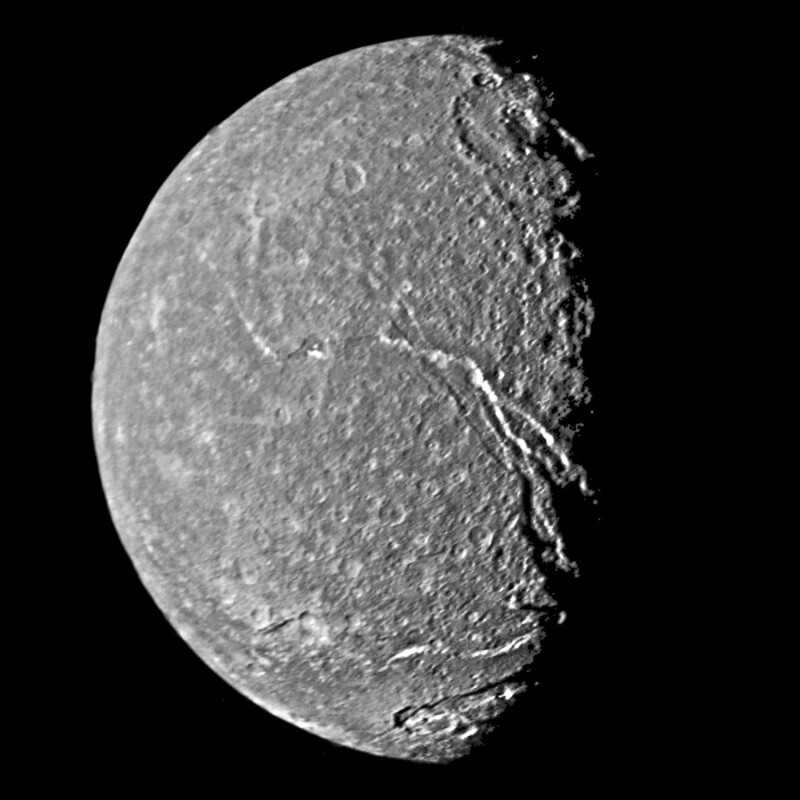
- Titania, which is 60 kilometers larger than Oberon, has a diameter of 1580 kilometers. It is located 436,000 kilometers away and completes a full revolution around the ice giant in 9 days. The temperature parameters of this satellite are similar to those of Oberon, with slight variations of a few degrees being acceptable.
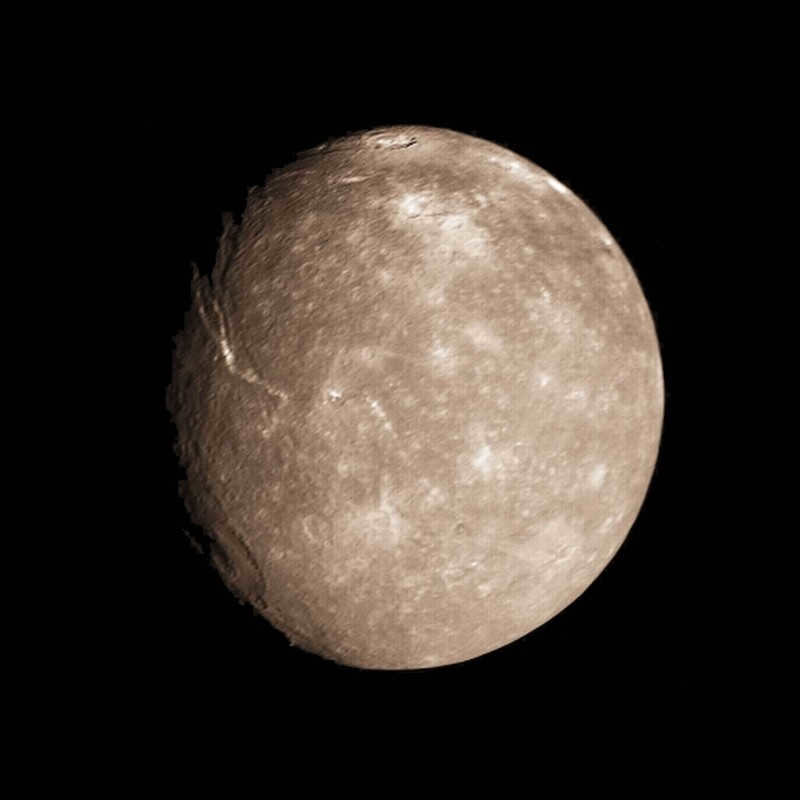
- Miranda. Scientists are drawn to this celestial body due to its distinctive appearance. It has a diameter of 400 kilometers and is predominantly covered in mountainous terrain, with peaks reaching heights of up to 5000 meters. Additionally, there are gorges scattered across its surface. Notably, the largest depression, measuring 15 kilometers in depth, is located near the southern pole.
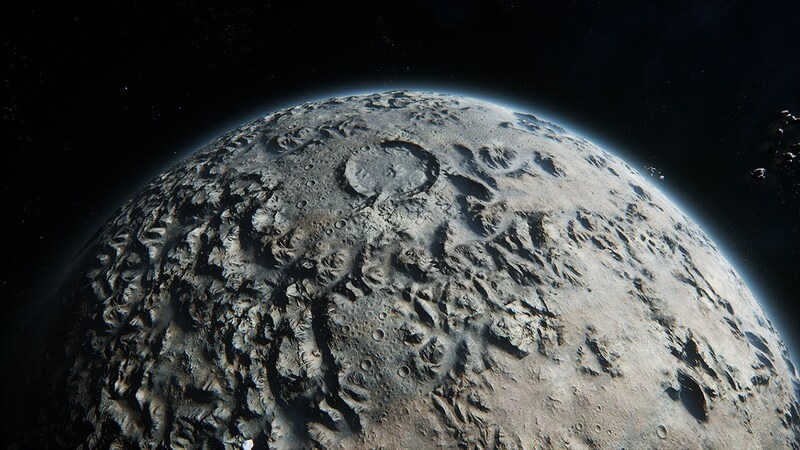
Physical characteristics
Uranus has a considerable diameter of 50,724 km, placing it in the third position among the largest planets in our solar system. In terms of mass, it holds the fourth spot.
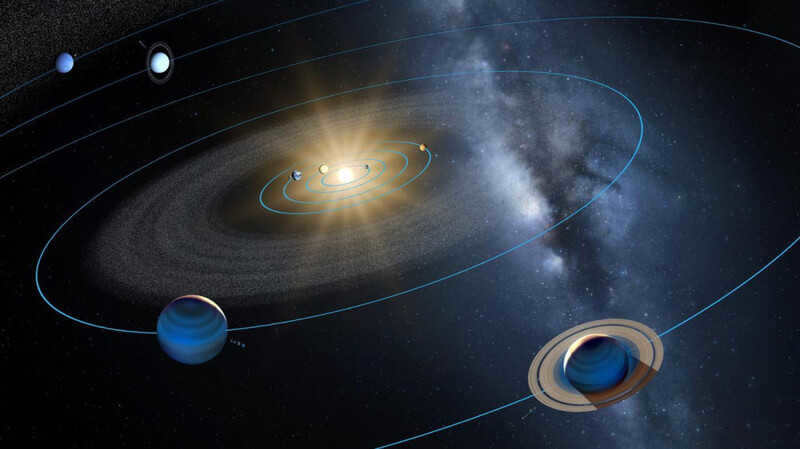
The planet is known for its frigid climate, with a surface temperature of -224°C. It has a colossal radius of approximately 25.3 thousand kilometers, with a permissible deviation of 7 kilometers. This means that the planet’s radius is four times larger than that of the Earth.
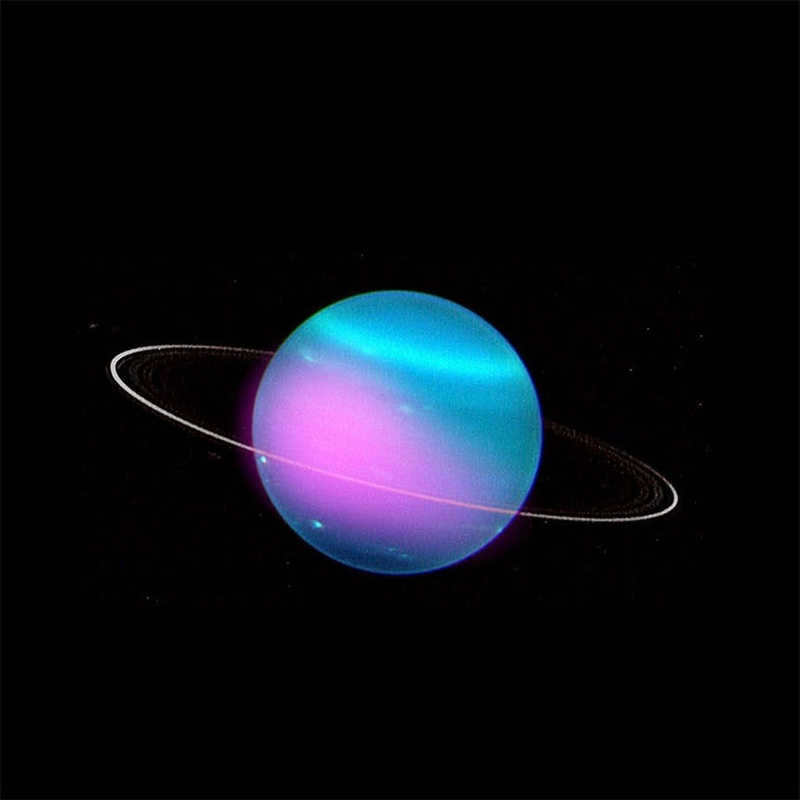
The surface area of Uranus is approximately 8.1 billion square kilometers. The density of the planet is about 1.27 grams per cubic centimeter. The gravitational acceleration on Uranus is 8.8 meters per second squared, which is almost equivalent to 0.9 times the acceleration due to gravity on Earth.
Uranus, the coldest planet in the solar system, has a weight of approximately 8.5 x 10^25 kilograms.
This weight is nearly 15 times greater than that of Earth. Spacecraft that have been sent to Uranus have detected the presence of a magnetic field, which is located one-third of the way from the planet’s geometric center. Additionally, Uranus has a tilt of 59 degrees in relation to its axis of rotation.
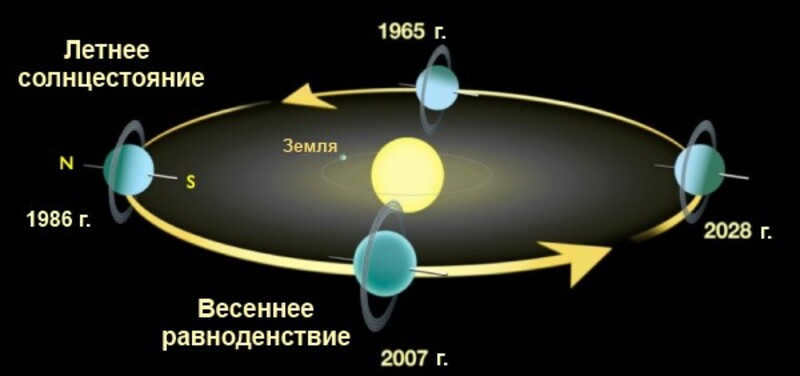
Unique Atmospheric Features
The atmosphere on Uranus is made up of various components, including the troposphere, stratosphere, and thermosphere. The highest layer is also known as the atmosphere’s crown. Interestingly, Uranus lacks a mesosphere. Hydrogen is the predominant gas in the planet’s atmosphere, making up nearly 83% of its composition. There is a permissible deviation of 3%. Additionally, the atmosphere contains 15% helium and 2.3% methane.
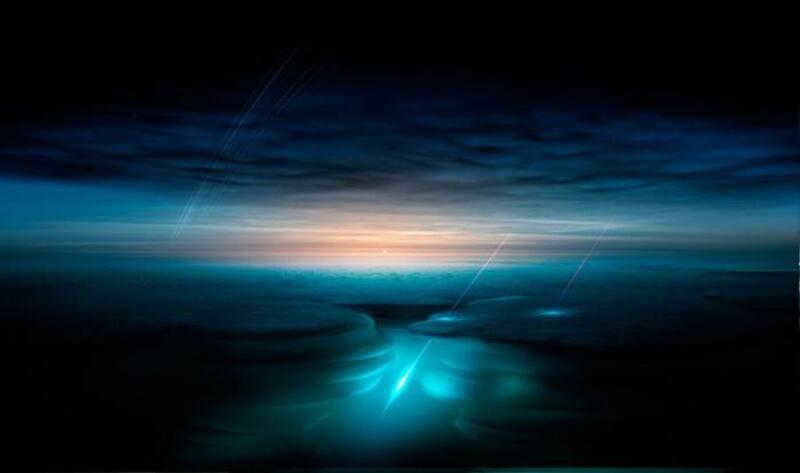
The surface experiences intense winds with speeds of up to 900 kilometers per hour.
Due to its nearly 98-degree tilt, the polar regions of Uranus receive more solar energy annually compared to the equator. Surprisingly, however, the equator remains significantly warmer than the poles.
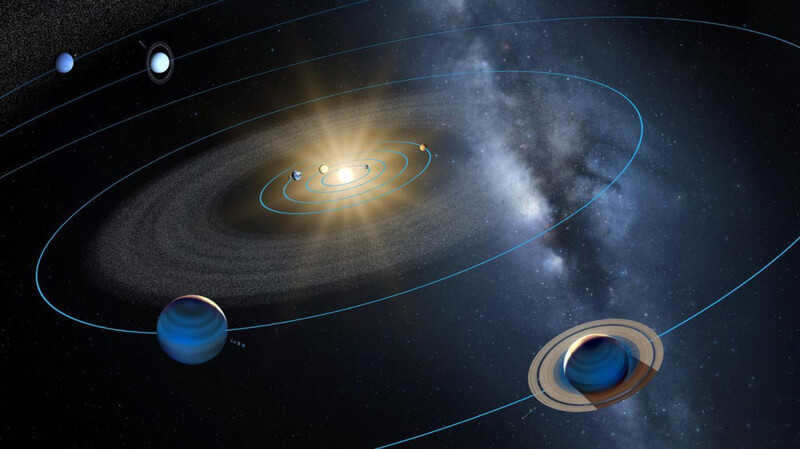
Researchers have now managed to ascertain the reason for the distribution of energy in this manner. On Uranus, one can observe the fluctuations in seasons and weather patterns. This phenomenon occurs because the planet periodically reaches the equinox point.
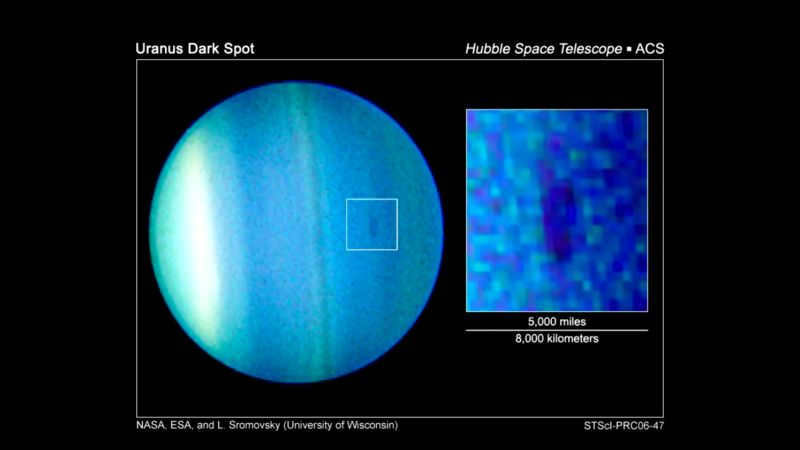
Discovering the ice giant
In the middle of March 1791, the ice giant was found by W. Herschel, an astronomer from England.

Before the discovery of Uranus, the planet had been observed numerous times, but it was mistakenly perceived as a star by scientists. Several years prior to the discovery, Herschel claimed to have noticed rings around the planet, although this was not confirmed until almost two centuries later. It wasn’t until 2006 that it was confirmed that the rings have a red hue.
Uranus was only visited once, in 1986, when the Voyager-2 spacecraft, which was invented in America, made a journey to the planet.
During this visit, the spacecraft transmitted images of Uranus back to Earth. These images were captured in the visible spectrum, as the spacecraft was in close proximity to the planet’s surface. As a result, scientists were able to observe the plain-looking planet without any visible streaks of clouds or storms in its atmosphere.
What makes Uranus fascinating?
Uranus stands out as the most condensed of all the colossal planets within our solar system. A single year on Uranus is equivalent to 84 Earth years. Interestingly, each pole spends half of this time in darkness before being bathed in sunlight for the subsequent 42 years.
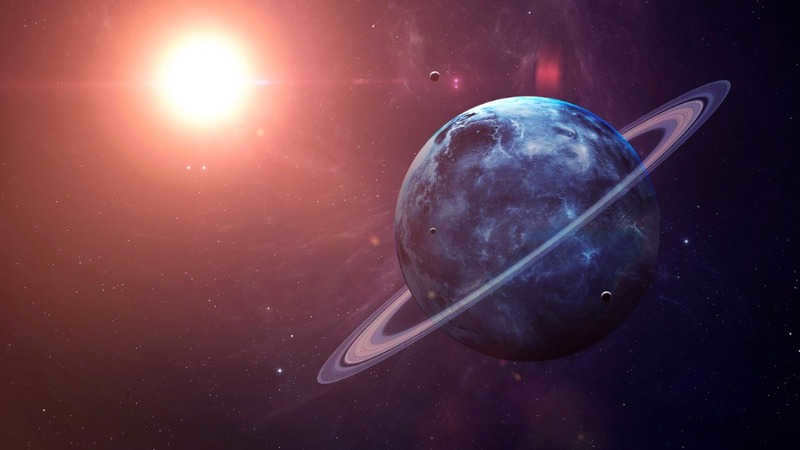
By gazing at an unclouded and dim firmament, one can easily observe the celestial body without the aid of any optical instruments.
Nevertheless, with the aid of high-quality binoculars, it is plausible to perceive the planet Uranus regardless of the cityscape.
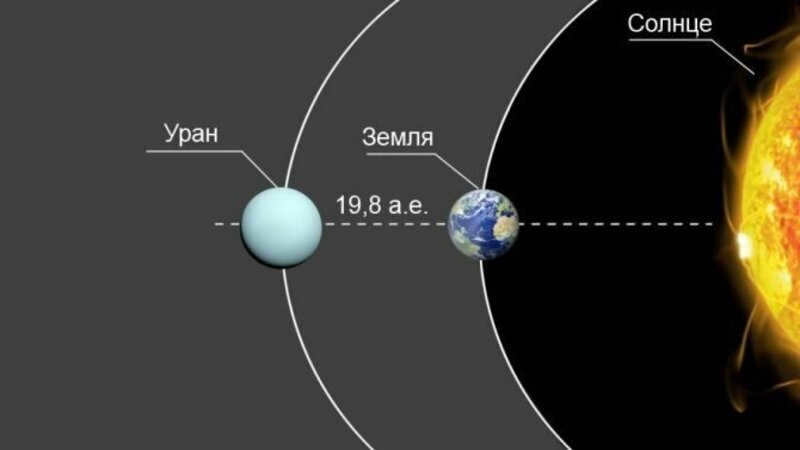
The discovery of Uranus marked a significant milestone in the history of astronomy as it was the first planet to be observed and identified using a telescope. Unlike the rest of the planets in our solar system, which were named after Roman mythological figures, Uranus was named after the Greek god of the sky, Uranus.

The system, comprising of satellites, is distinguished by its compact size. In comparison to other gas giants, it is relatively small. When tallying the combined weight of all the uranium satellites, the end result will be significantly less than the mass of Triton (a Neptune satellite).
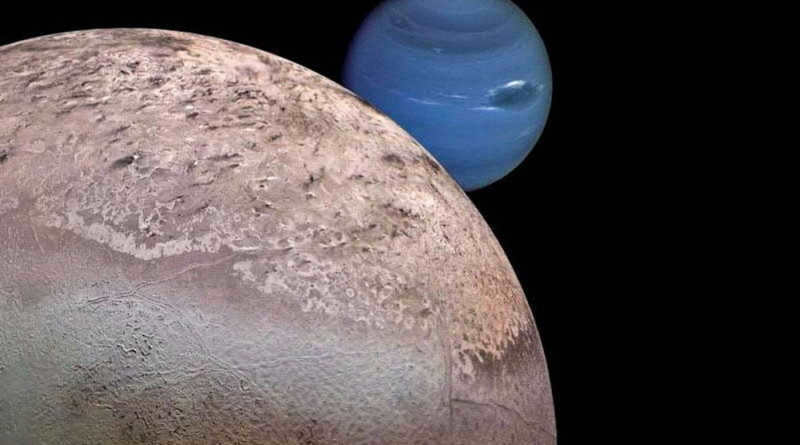
As previously stated, the names of all satellites are derived from the characters found in the literary works of W. Shakespeare and A. Pope. Through extensive experimentation, it has been verified that the atmosphere of Neptune and Uranus consists of diamonds. Regrettably, obtaining these diamonds remains an unattainable feat.
Images of Uranus
As previously stated, Uranus is a stunning and extraordinary planet. Take a look at the following images to get acquainted with its beauty.
Recent updates on Uranus
Researchers are continuously dedicated to the exploration of planets within our solar system. Uranus is no different. With the advancement of modern technology, studying this celestial body has become incredibly convenient, enabling us to uncover even the tiniest of details. Just recently, the Hubble telescope was deployed for this purpose.

After a year, the spacecraft successfully completed its mission, circling all the planets and stars in our solar system. It captured stunning images of the massive gas giants, showcasing their beauty and magnificence from every angle.
While the planets belonging to the Earth group consist of rocky materials and are continuously bathed in sunlight, the remote celestial bodies possess various distinguishing characteristics. Saturn, Uranus, Jupiter, and Neptune are primarily composed of frigid hydrogen gases.
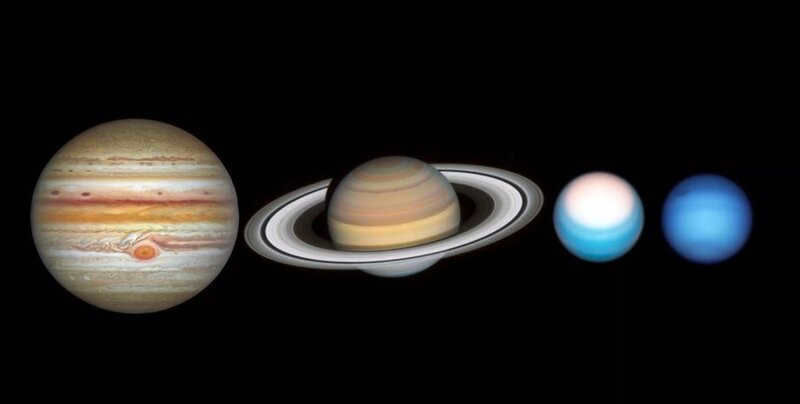
Among the substances found in this compilation are ammonia, helium, and methane. Additionally, there exists a concealed stratum of water, which is situated within the deeper regions of the shell. This aqueous layer envelops a diminutive yet intensely heated nucleus.
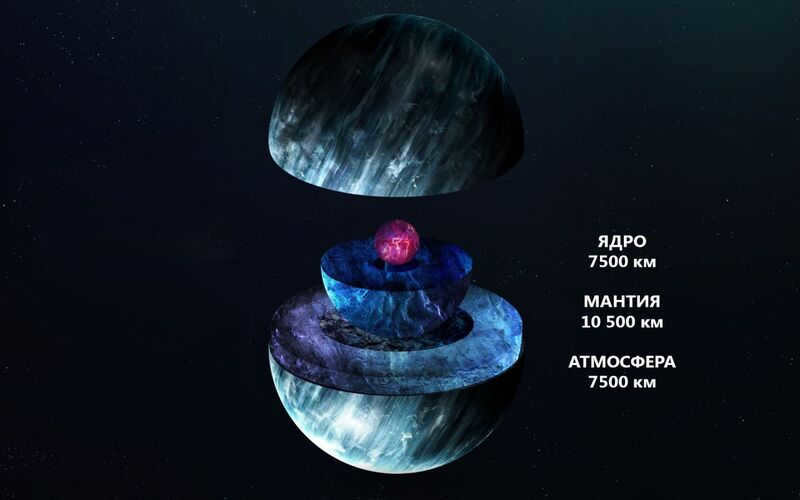
In the past half-century, numerous images have been captured by spacecraft, revealing the ever-changing nature of the bright atmospheres. As a result, intentional efforts have been made to direct spacecraft towards the colossal planets in order to unravel the mysteries surrounding these celestial entities.
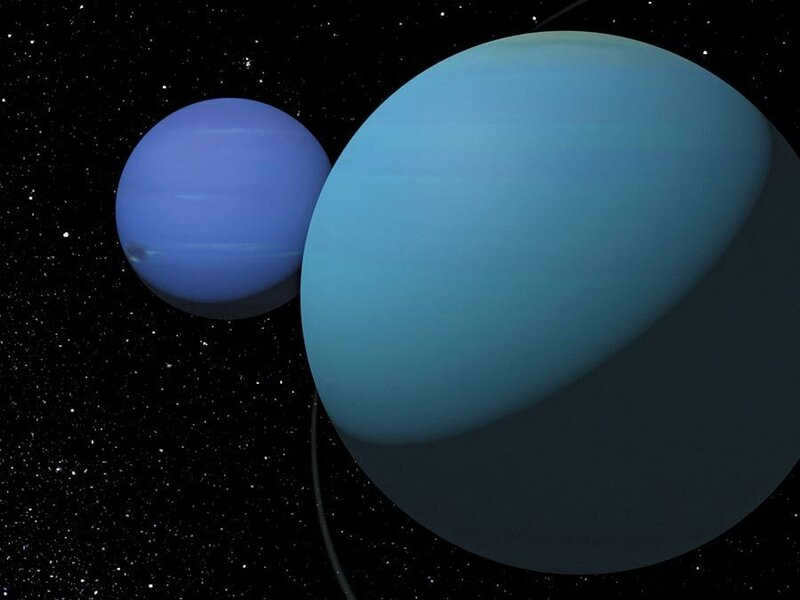
The focus is on the saturated polar cap situated in the North. The dominant season in this hemisphere is spring. Additionally, the level of ultraviolet rays received from the Sun is considerably high in this area. As a result, the polar region starts to emit light and takes on a lighter shade. It is highly likely that this can be attributed to the fluctuations in the methane haze. After all, its transparency levels are constantly in flux.
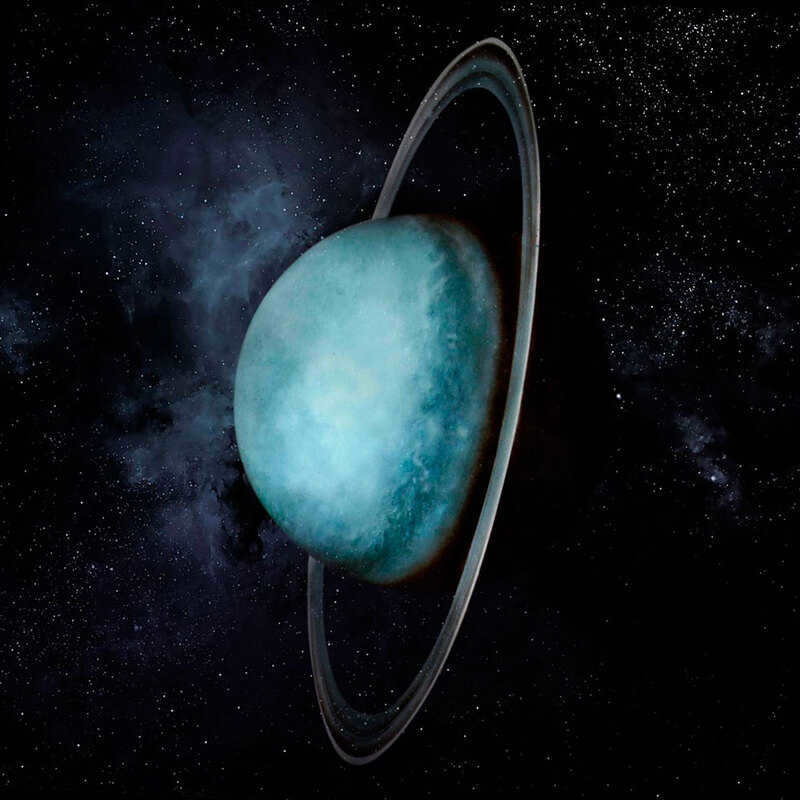
Additionally, the presence of aerosol particles leads to the occurrence of brightening. Even during periods when the atmosphere’s cap becomes brighter, the Southern boundary remains at the identical latitudes. This phenomenon has been observed for numerous years. It is theorized by scientists that a particular jet stream is obstructing the movement of particles at the 43 degrees latitude.
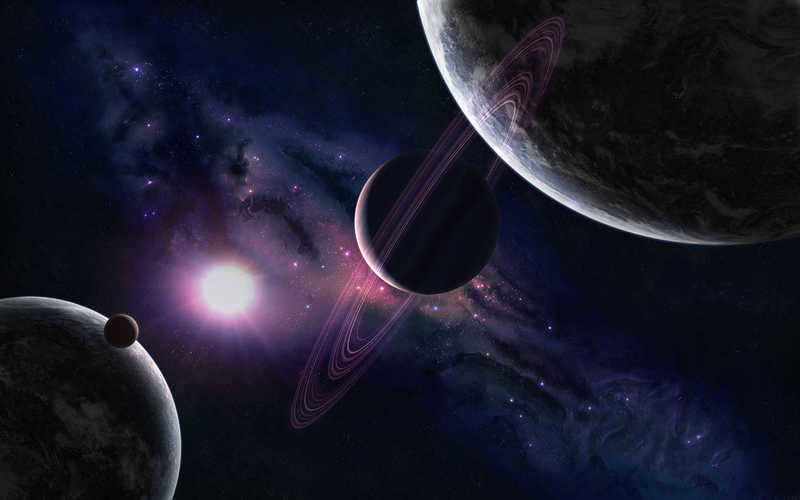
Scientists have discovered that Uranus’ moons bear a striking resemblance to Pluto. This finding was made possible by studying the infrared radiation emitted by the moons. The analysis revealed that the moons retain heat on their surfaces, although they are gradually cooling down. This phenomenon is commonly observed in small objects with icy, rough surfaces.
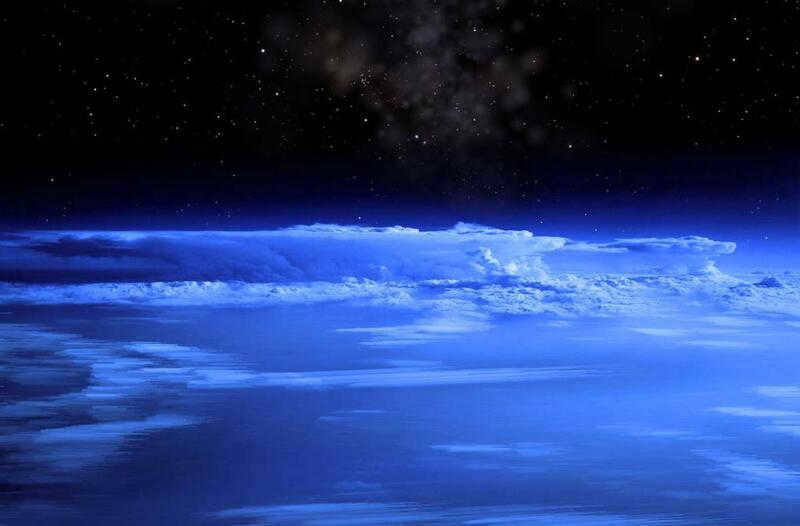
In this category, along with uranium satellites, Pluto is also included. The satellites were targeted by spacecraft due to the observations made.
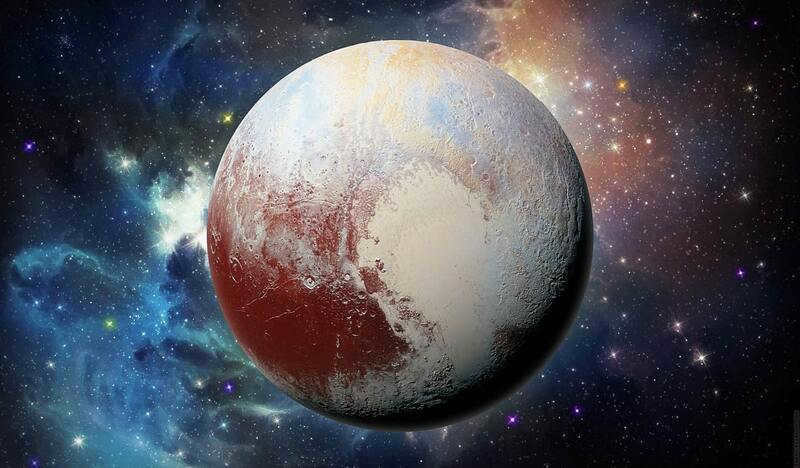
It was at that time when the equatorial area was bathed in sunlight, providing an opportunity to examine its heat retention capabilities. Once the physical and thermal properties were determined, they were found to be virtually identical to those of the smaller planets located past Neptune’s orbit.
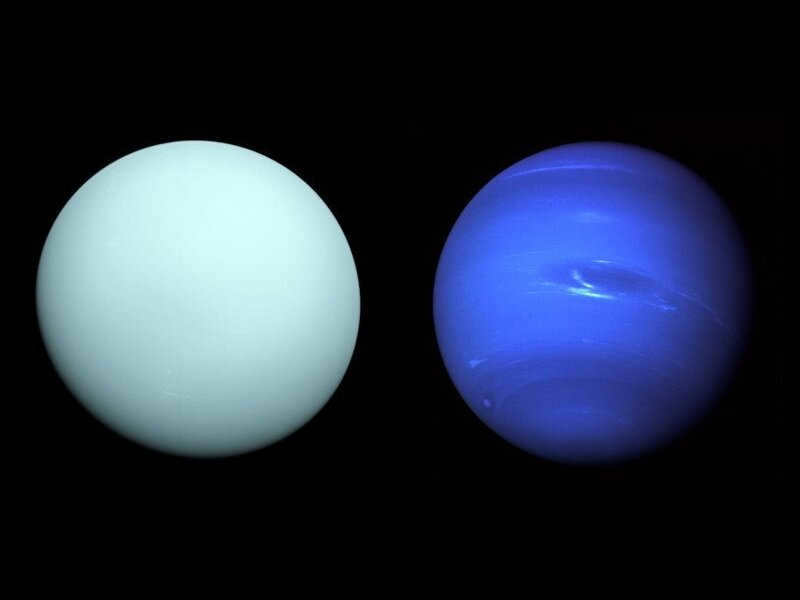
As stated previously, Uranus orbits at a specific angle. Its unique orientation is a result of impacts from massive celestial bodies.
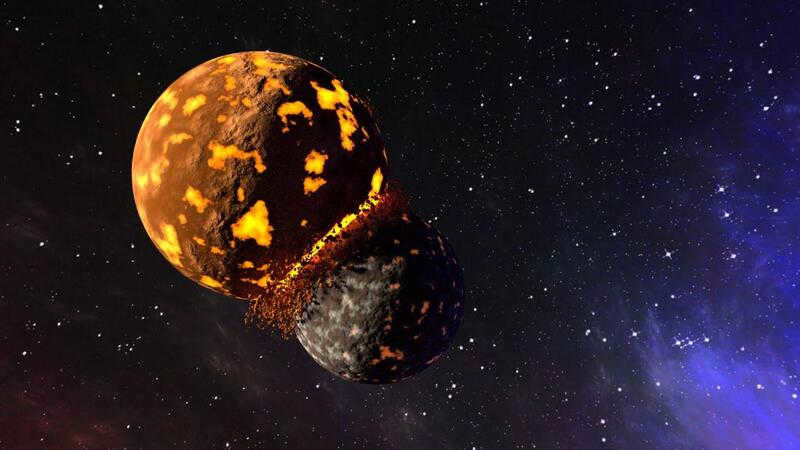
Due to this fact, the planet is widely regarded as the most frigid celestial body within the entire solar system. Through extensive calculations, it has been determined that this icy planet experienced a colossal collision with an object of immense proportions, surpassing the size of Earth by several magnitudes. Consequently, this catastrophic event caused the planet’s axis to tilt significantly. Subsequently, the scattered remnants of this collision formed a delicate outer shell, juxtaposed against a layer of frozen water.

Researchers have also discovered that the presence of uranium in the atmosphere emits an odor reminiscent of the scent of spoiled eggs. Interestingly, it is the absence of eggs that triggers the release of hydrogen sulfide, resulting in this foul smell. This odor is so repugnant to human senses that it elicits a gag reflex. Scientists have definitively identified this particular scent as the characteristic smell of the uranium atmosphere.
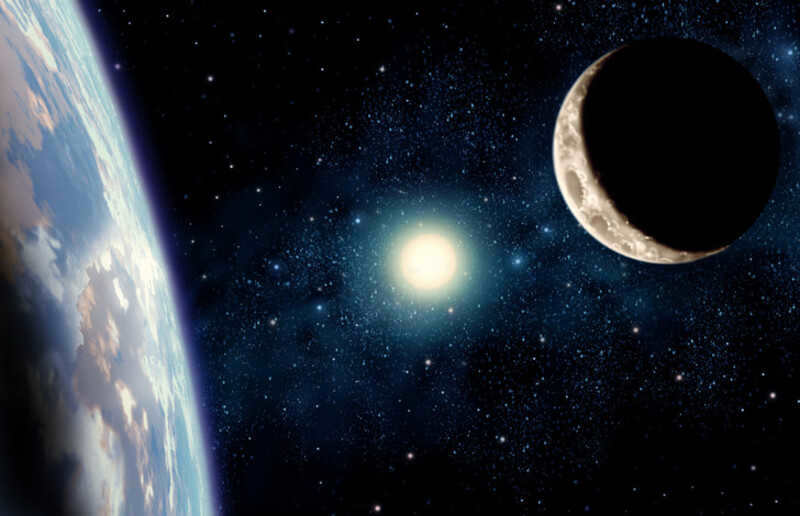
After years of investigation, the enigma surrounding the makeup of uranium clouds was finally unraveled. Prior to this breakthrough, scientists had hypothesized that the atmosphere of this celestial body was primarily composed of hydrogen sulfide and ammonia. However, there was a lack of concrete evidence to support this claim. It was not until the implementation of an advanced eight-meter telescope that researchers were able to confirm that hydrogen sulfide is indeed the dominant element within Uranus’ atmosphere.
